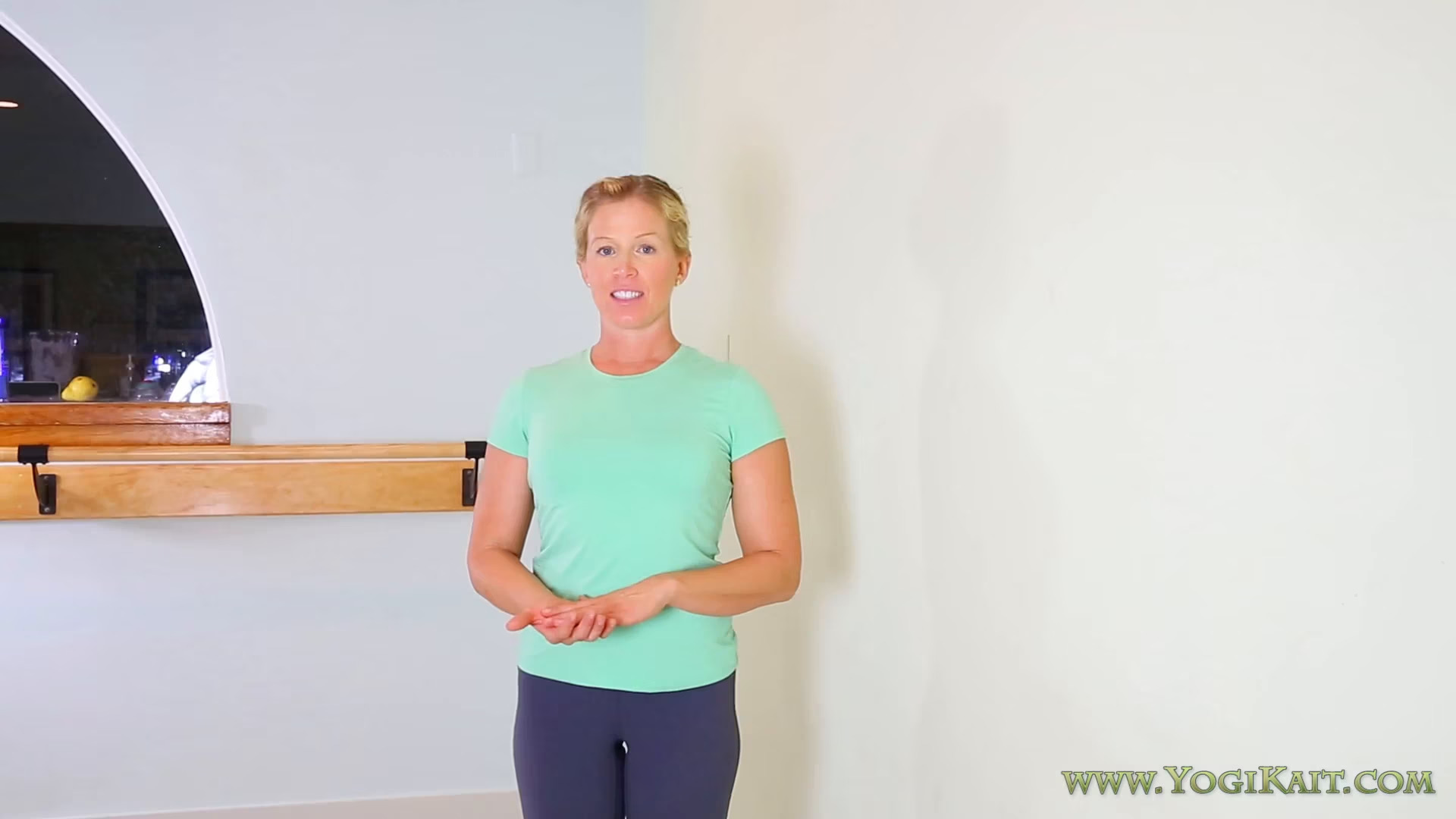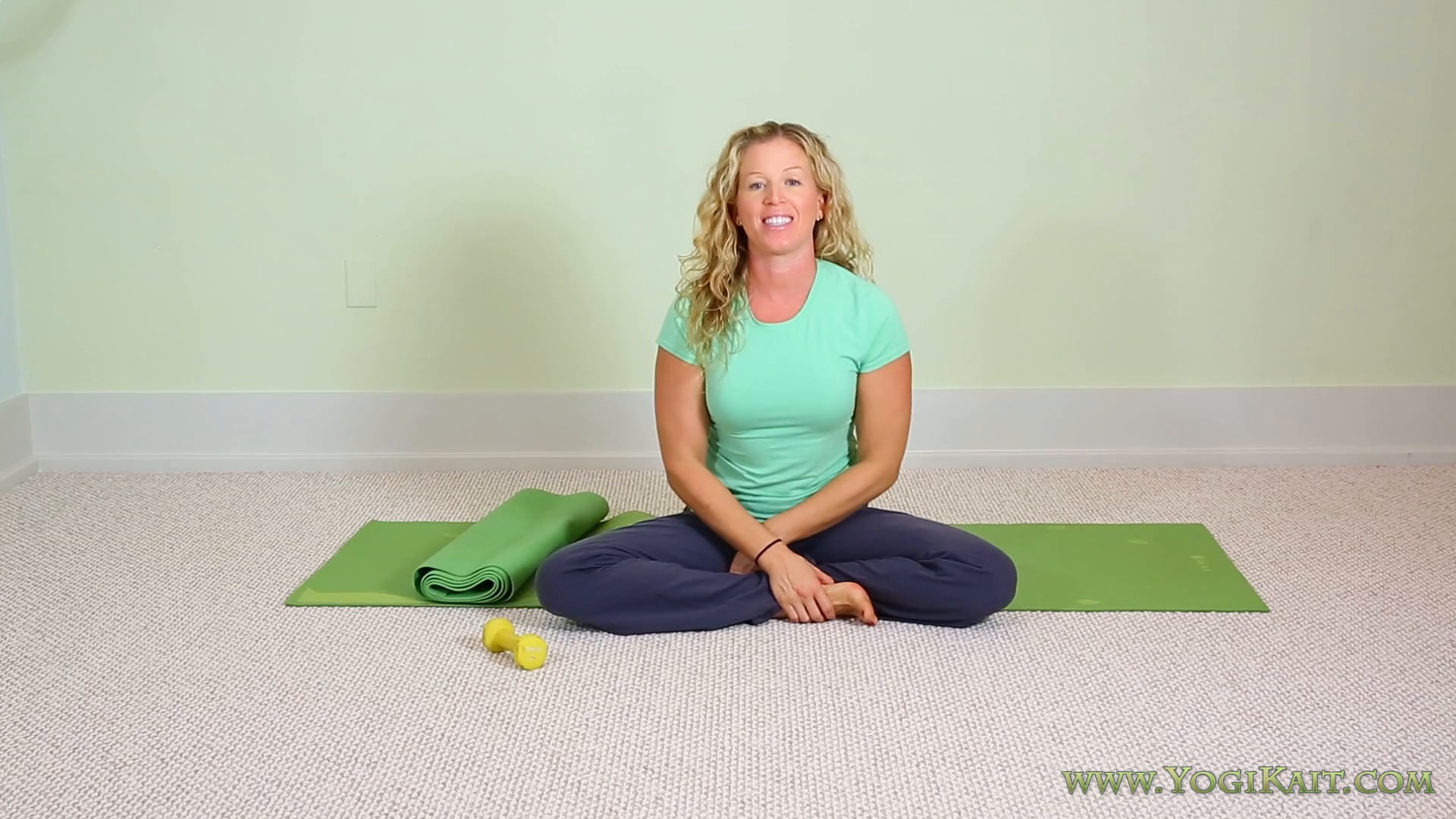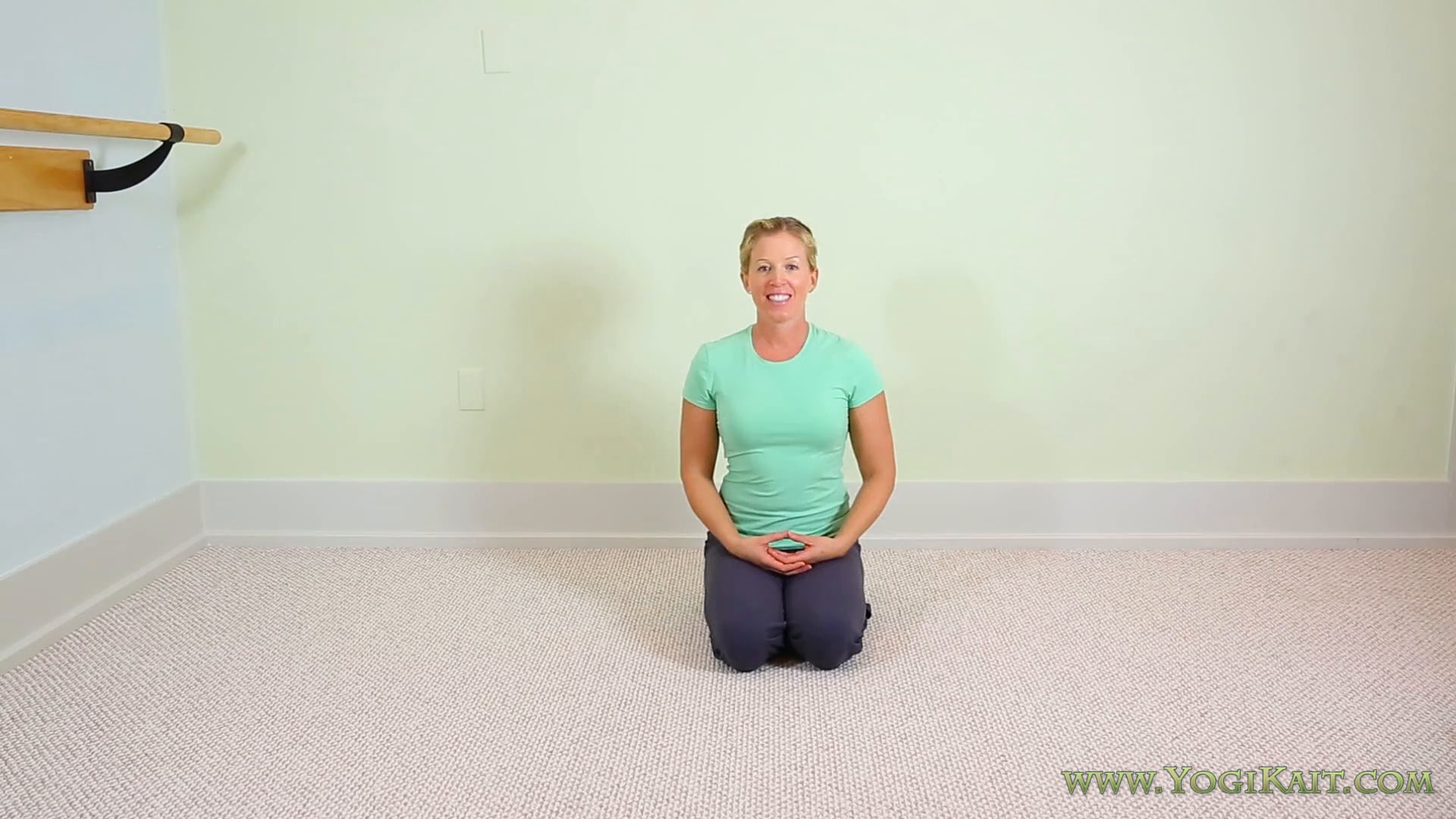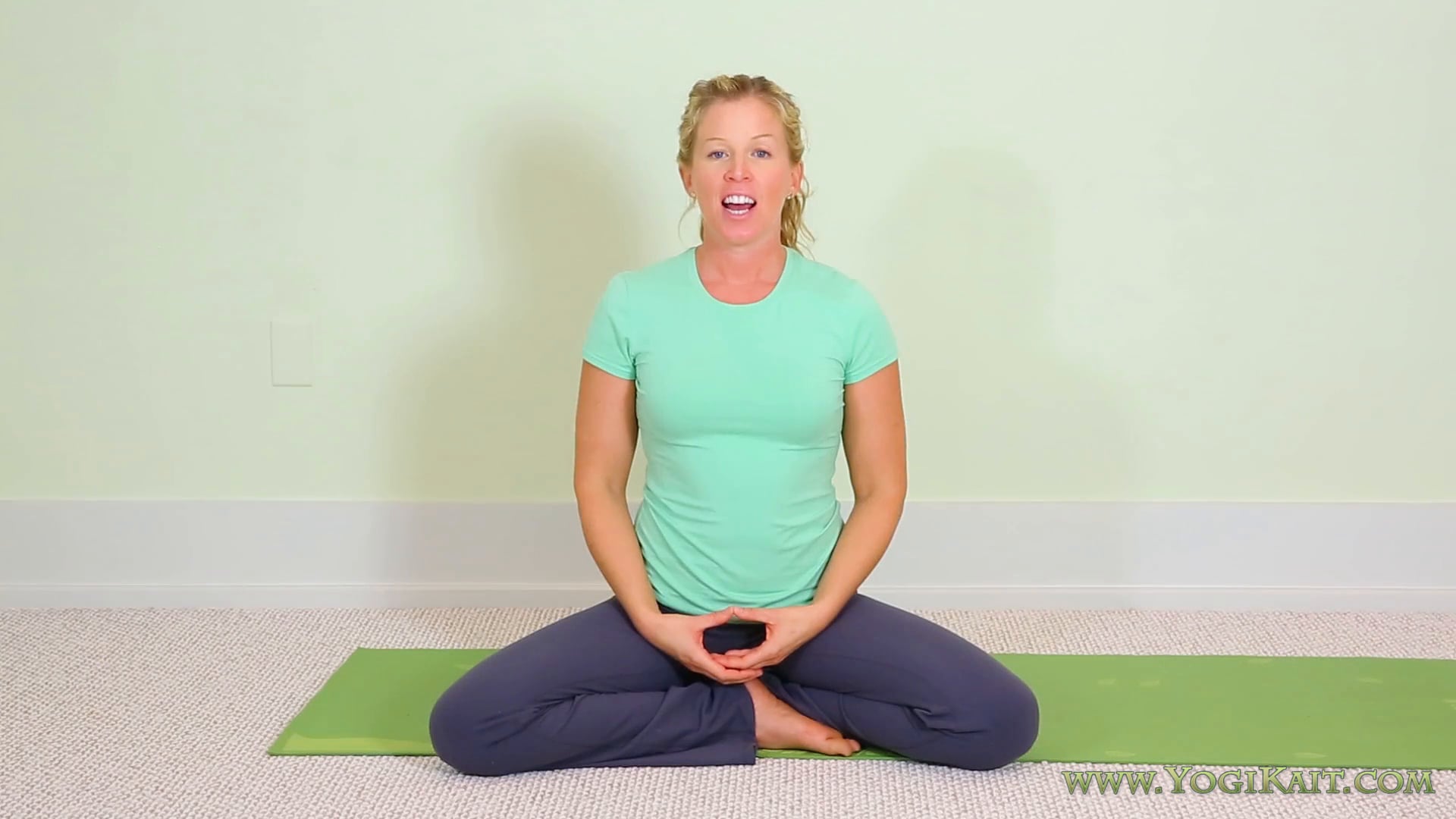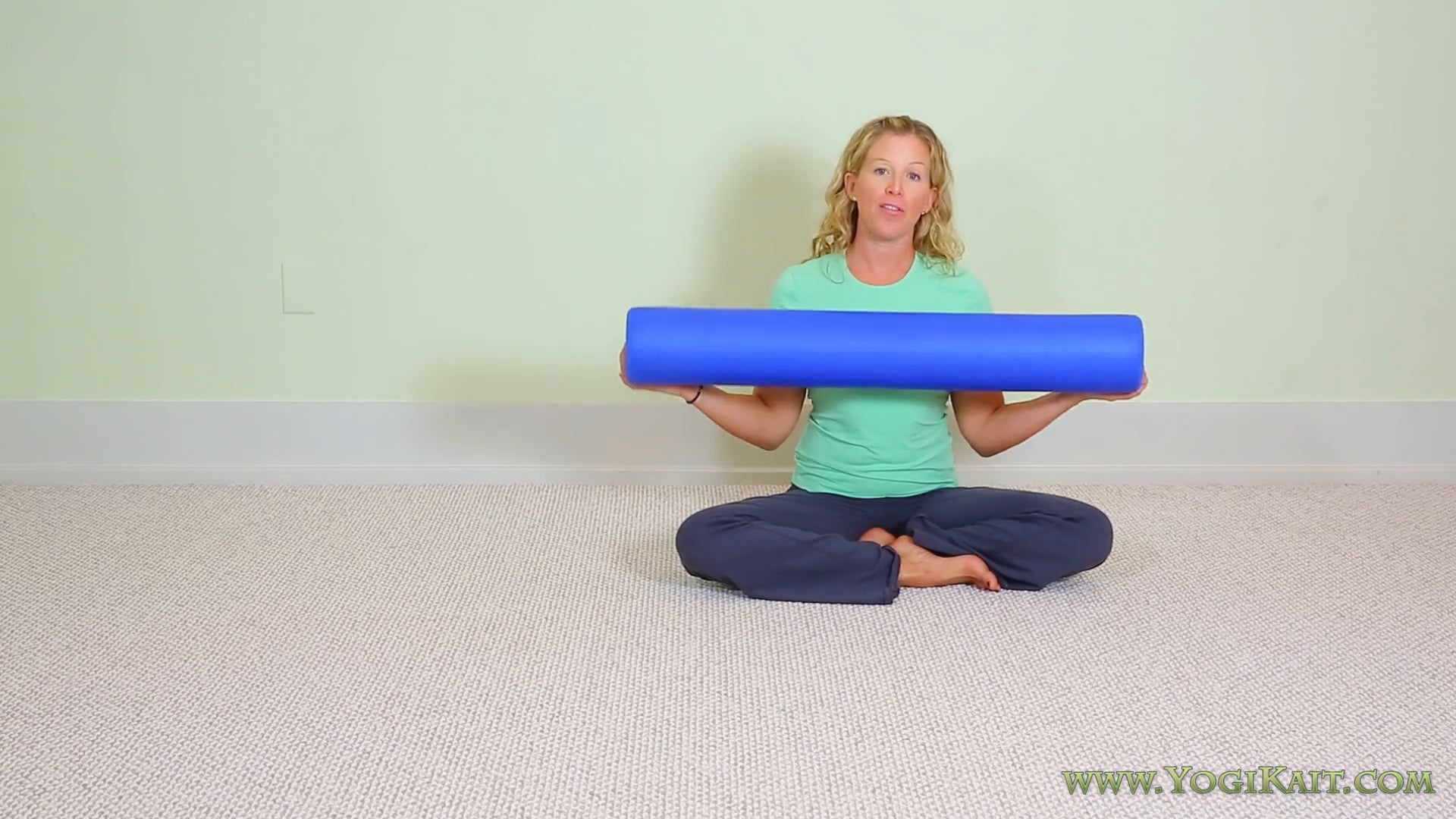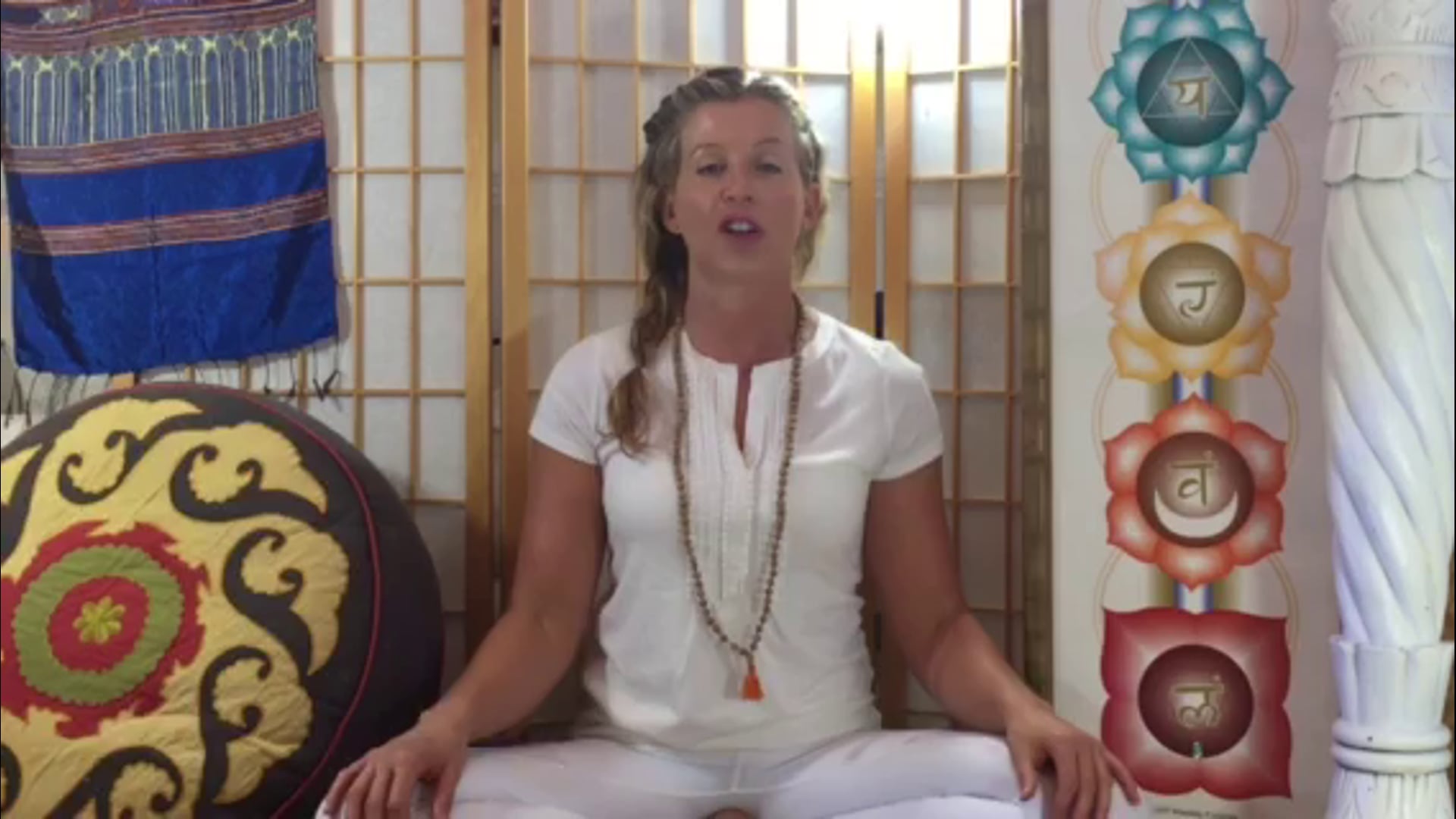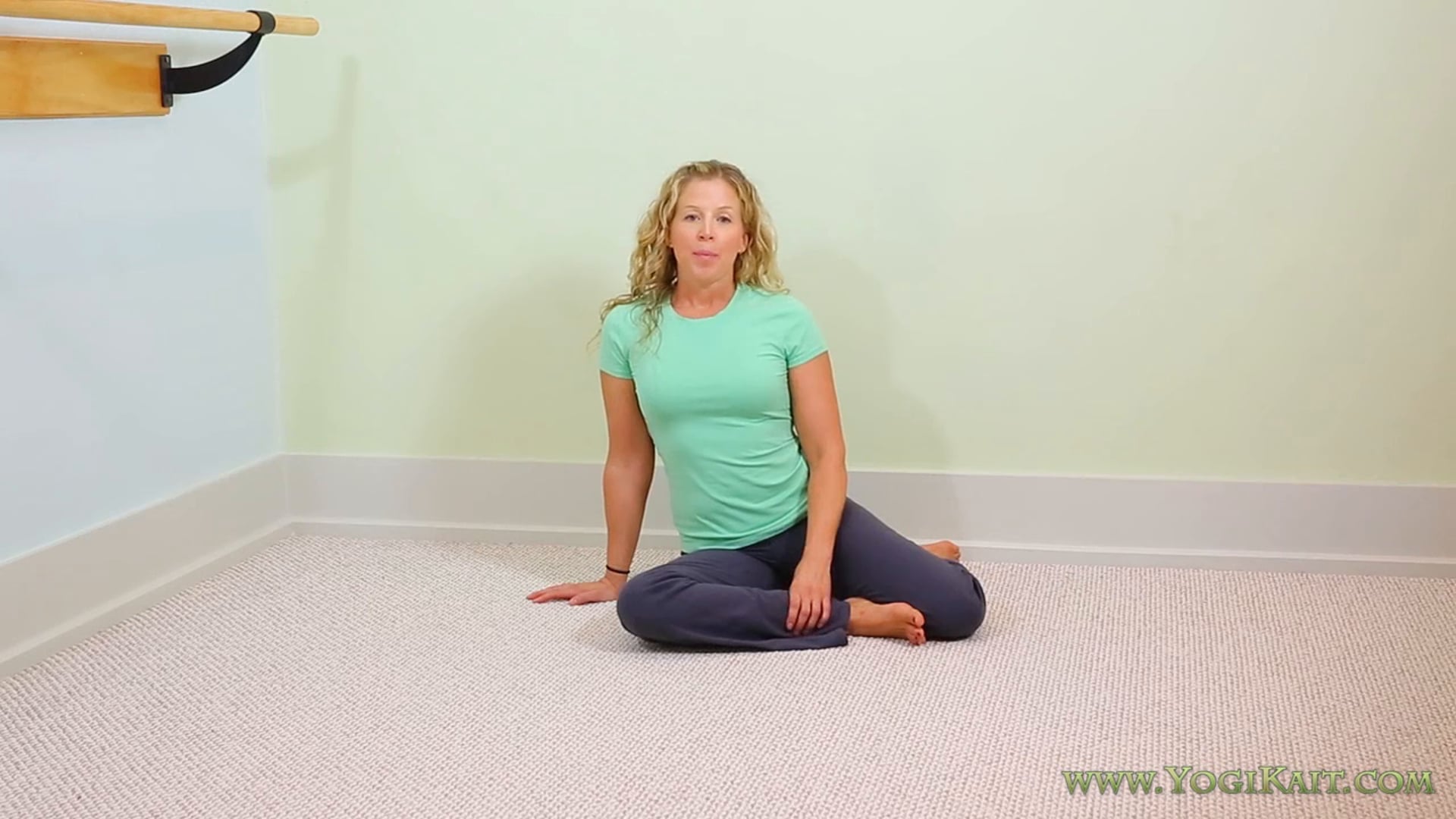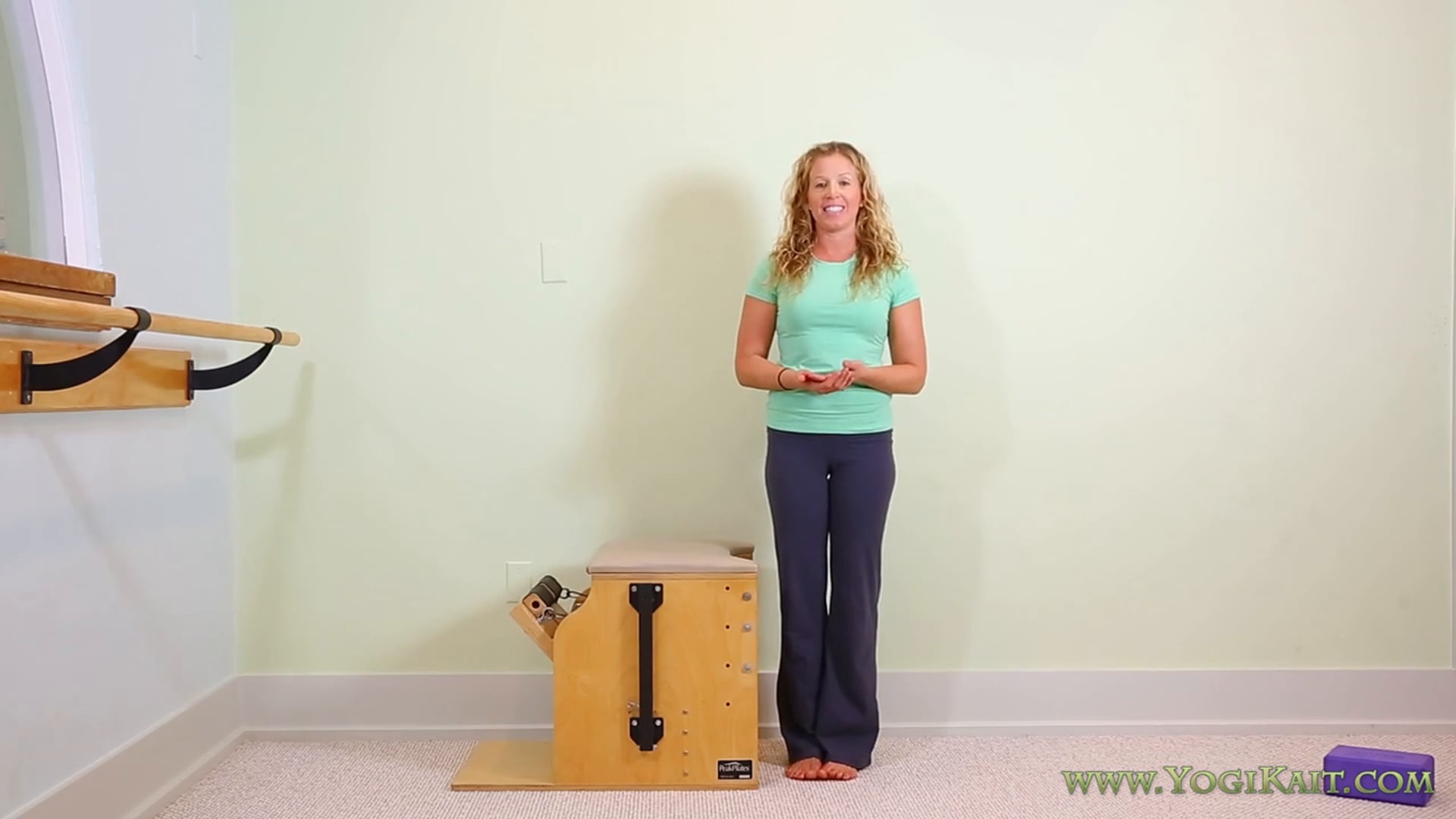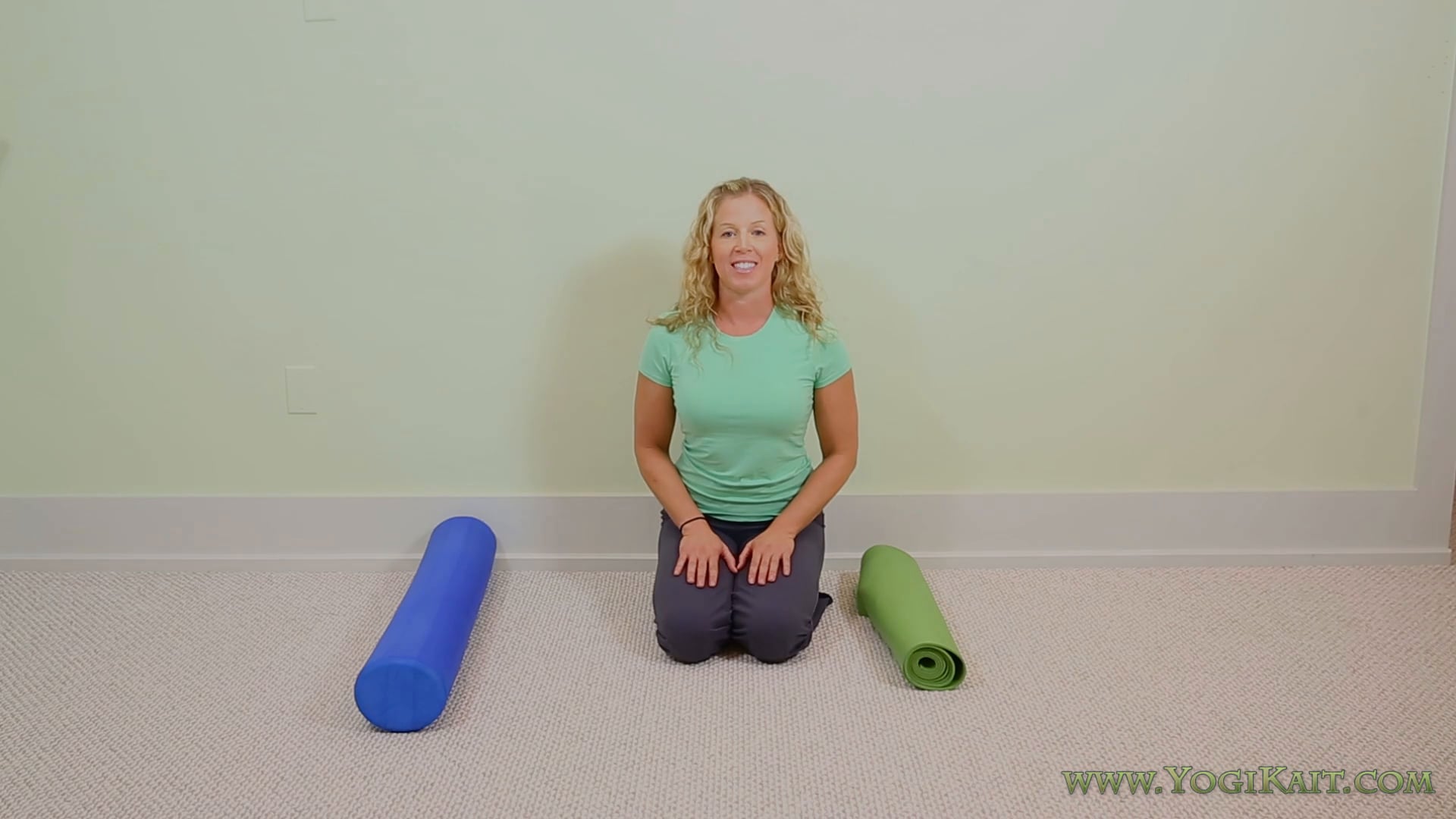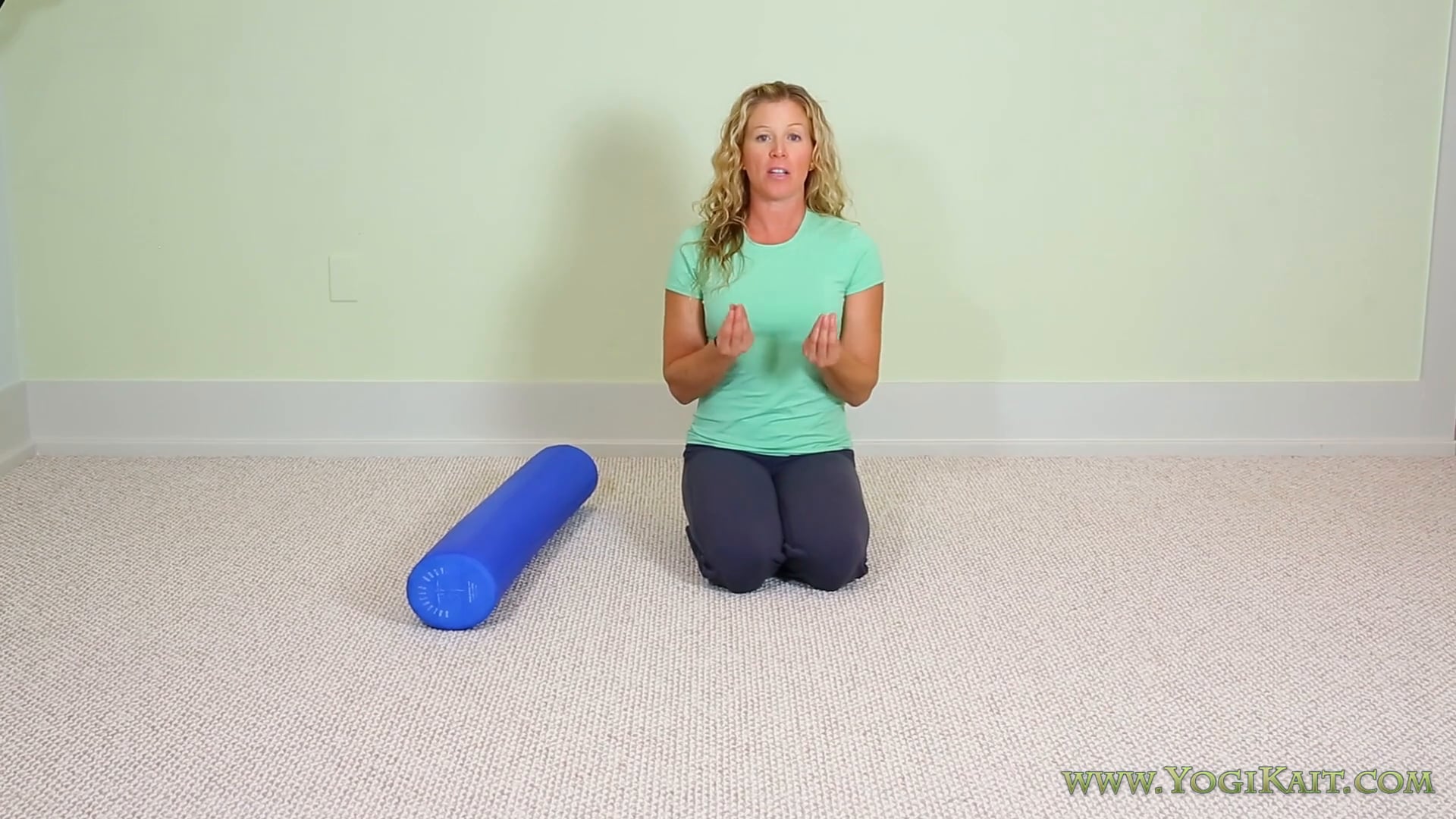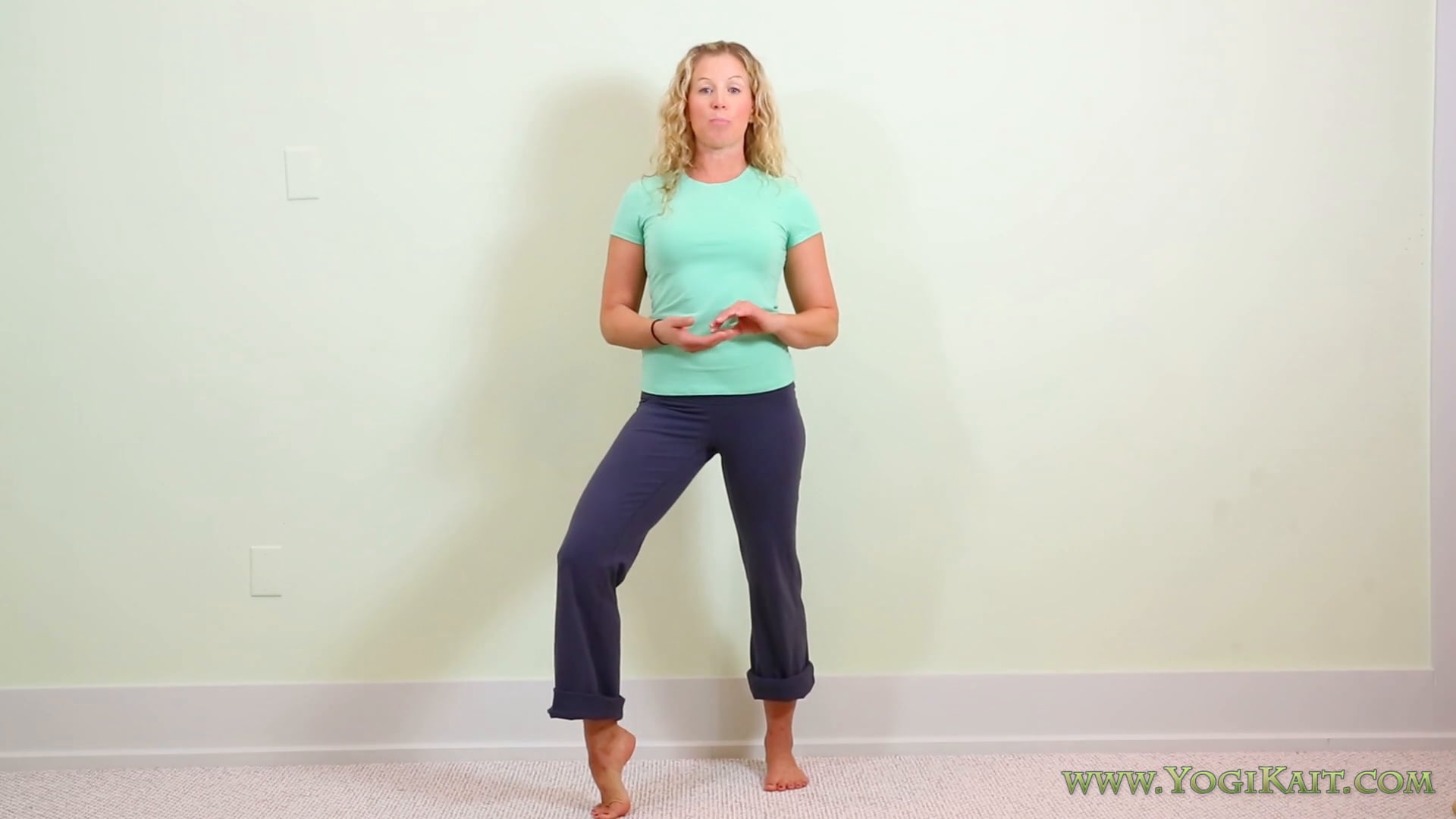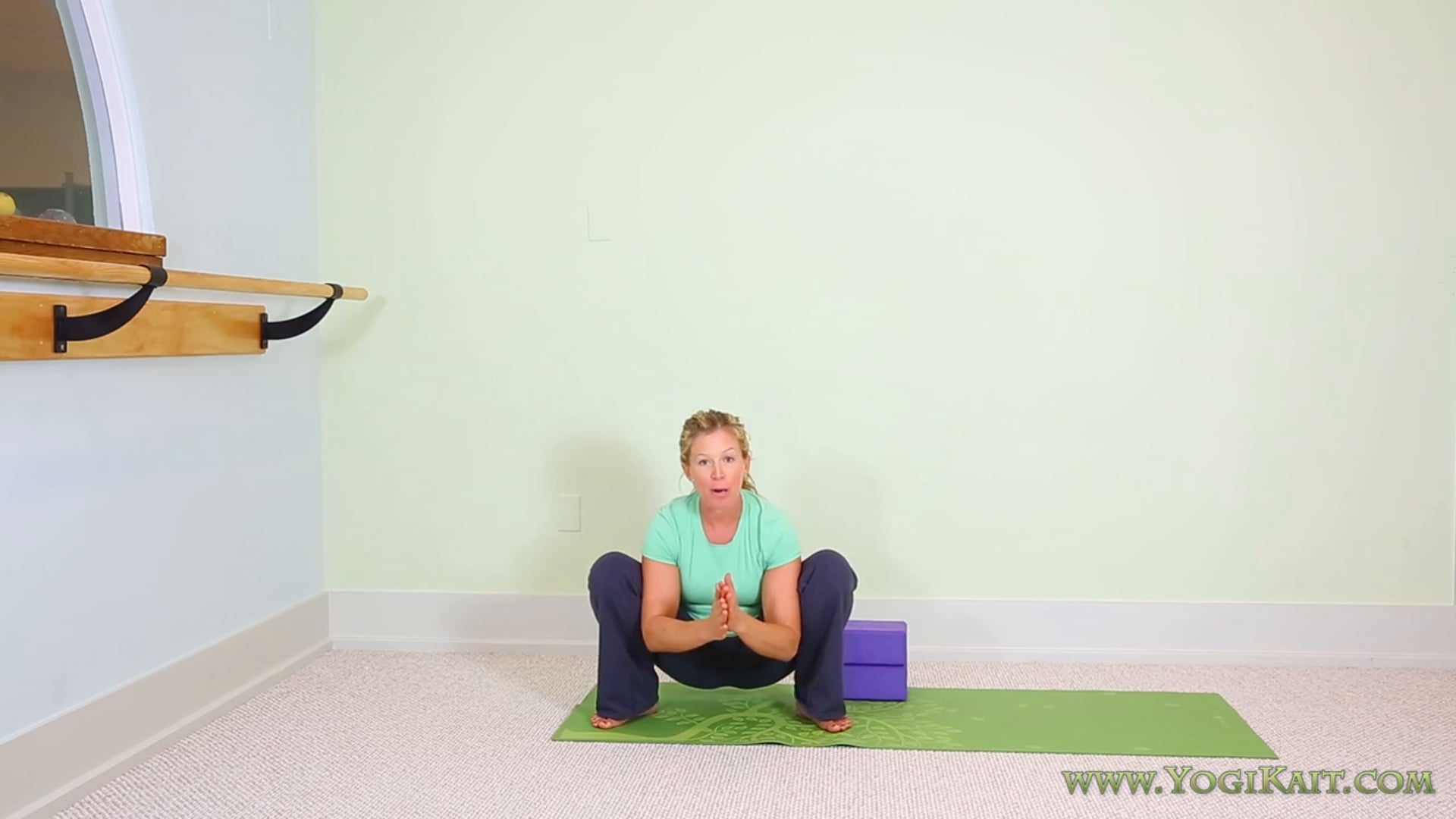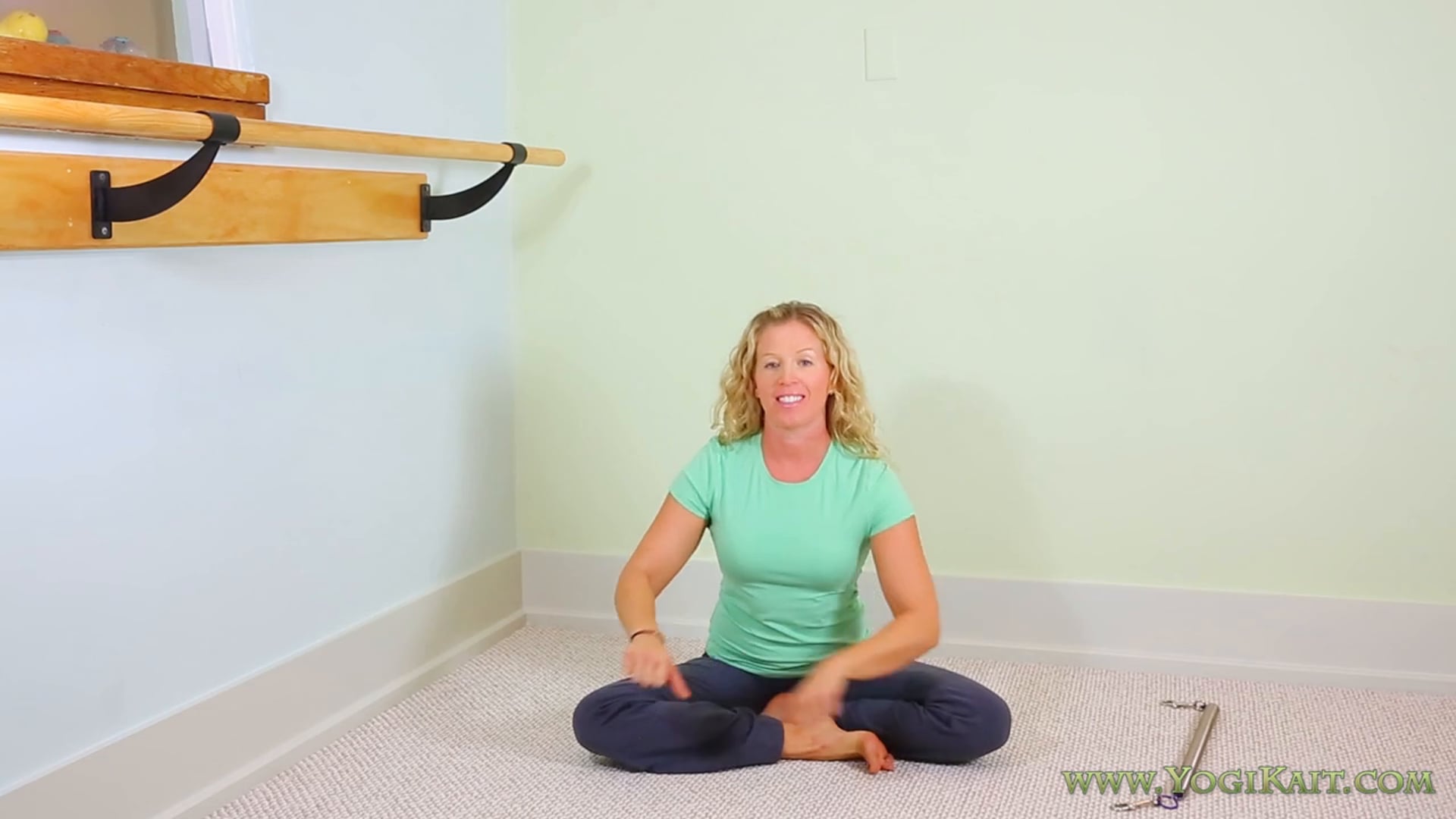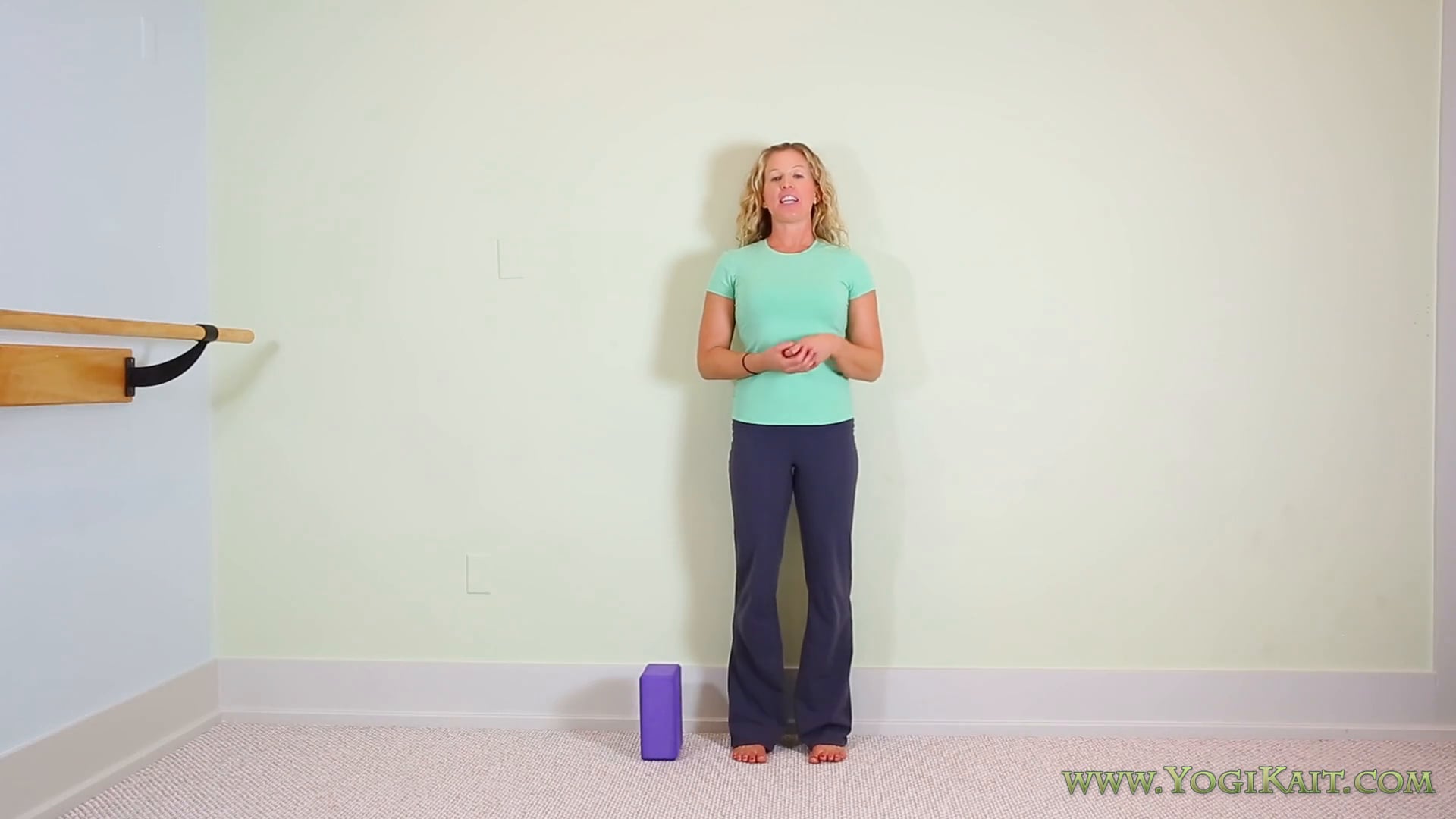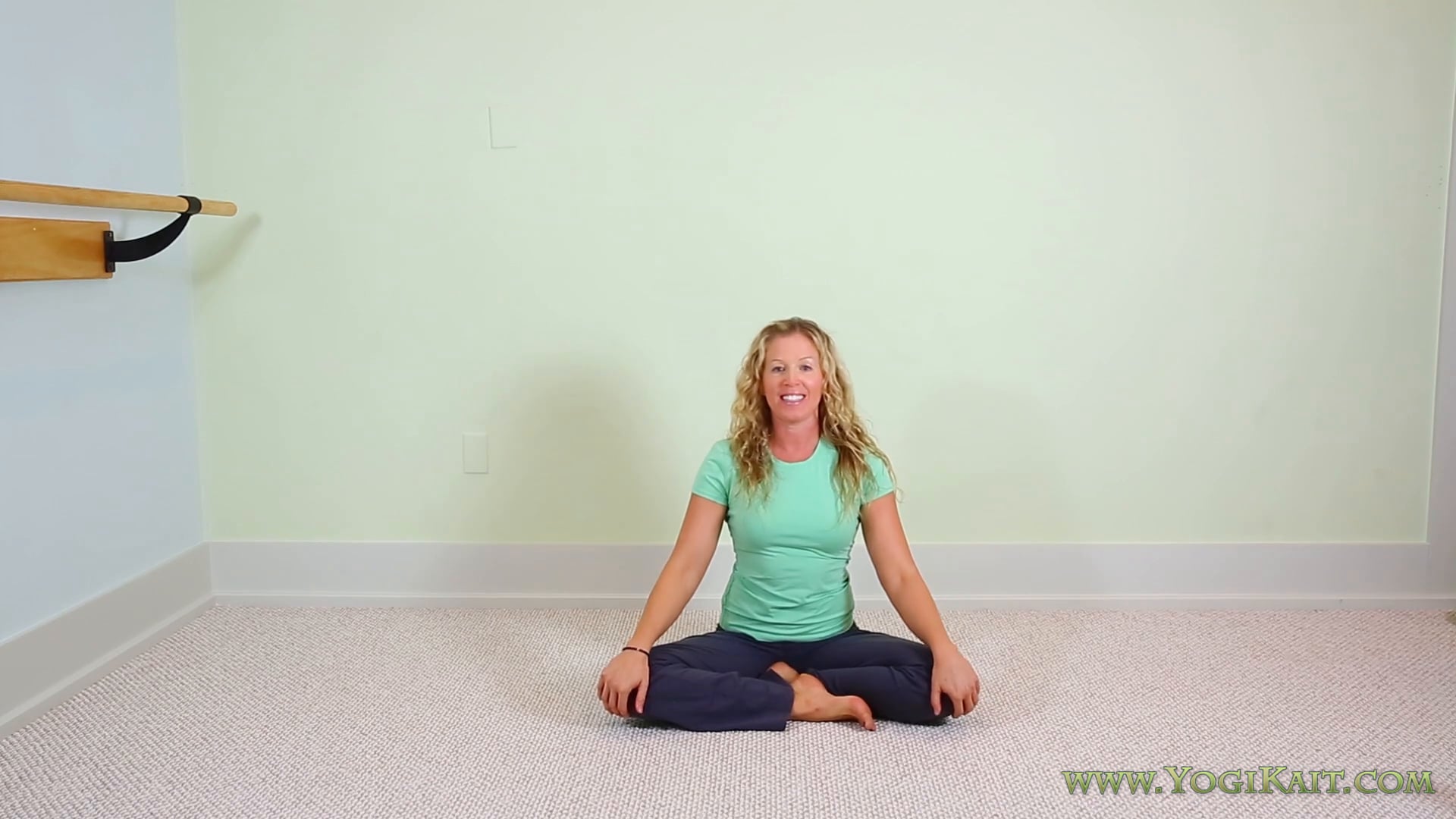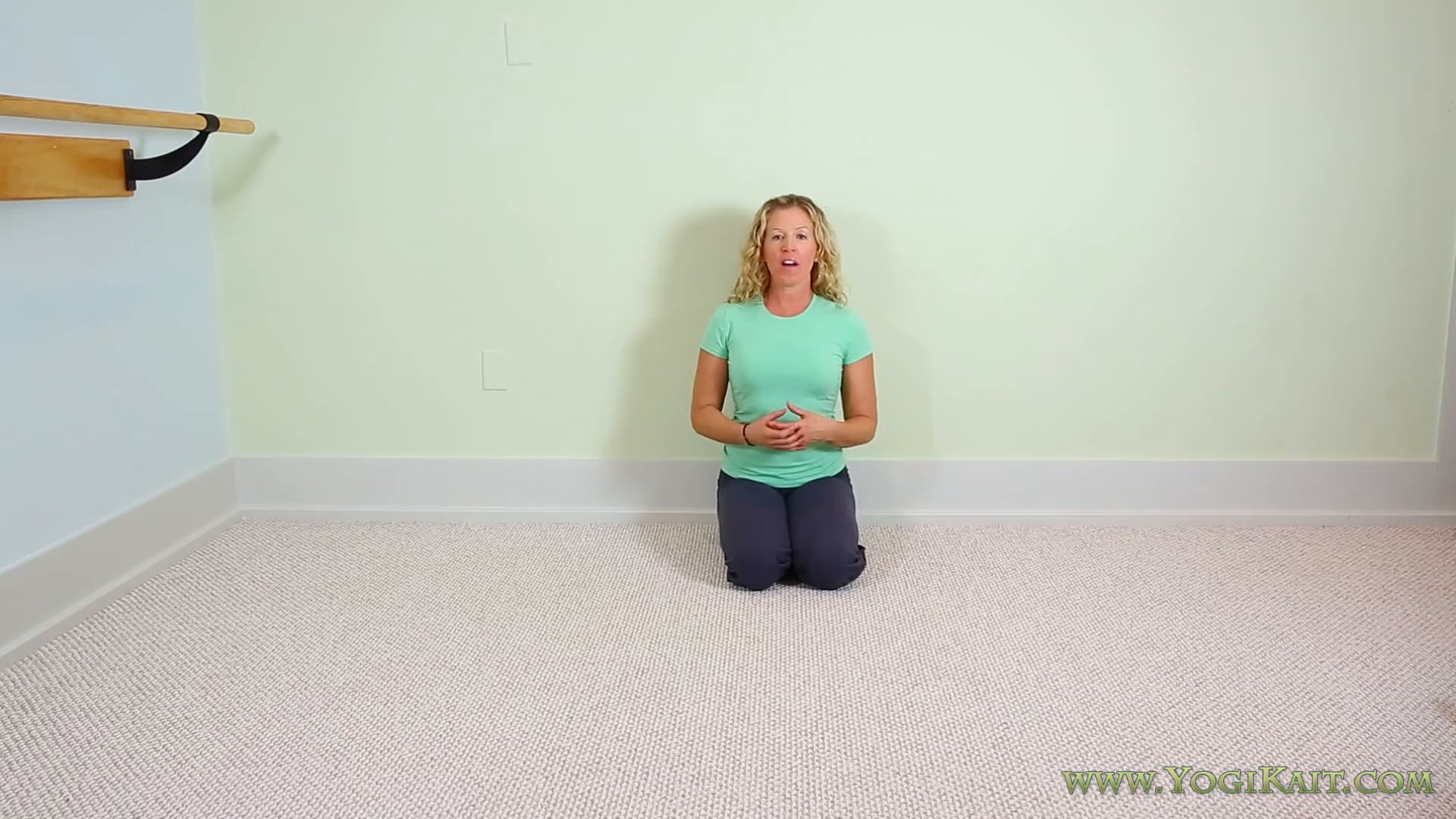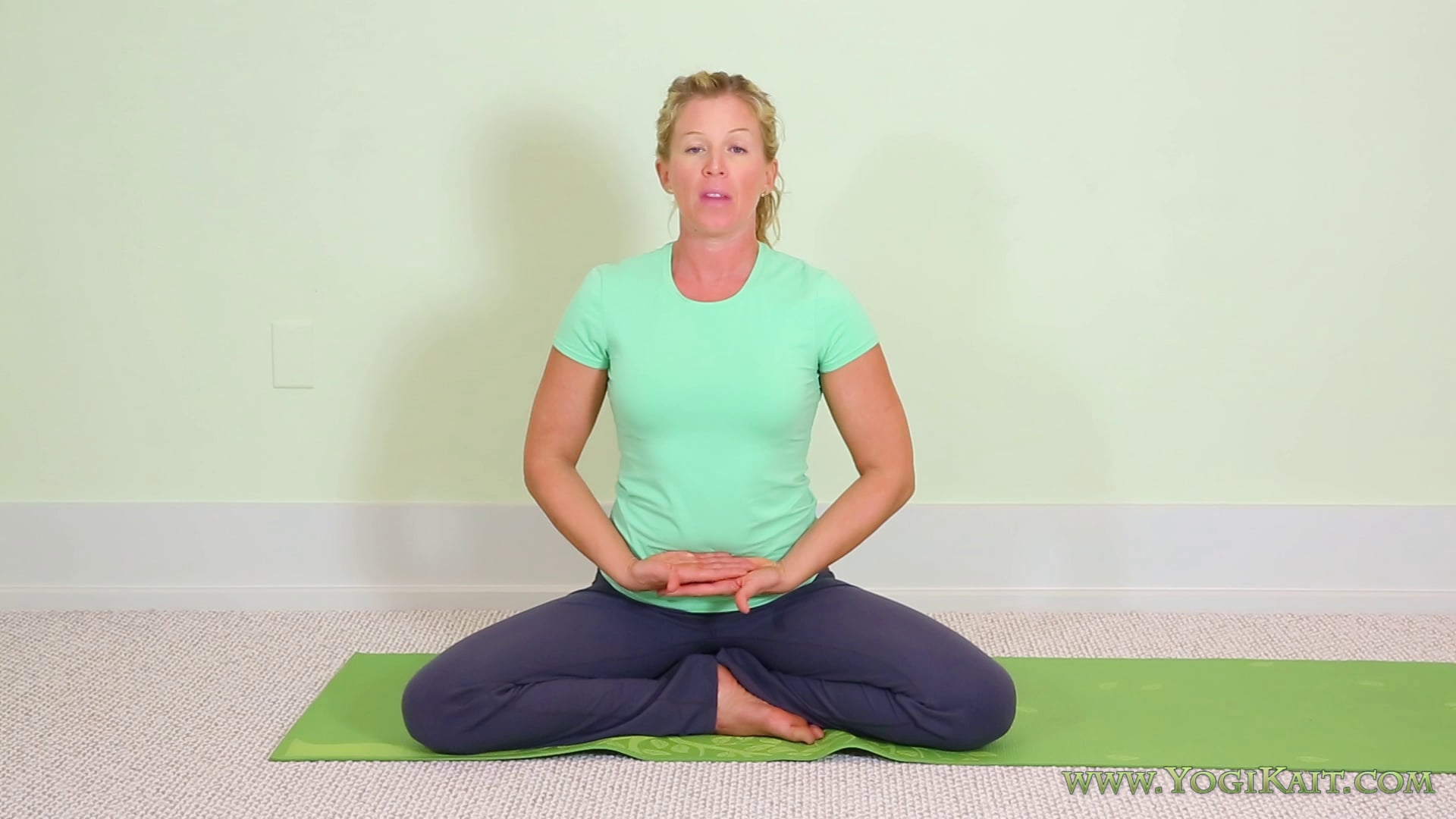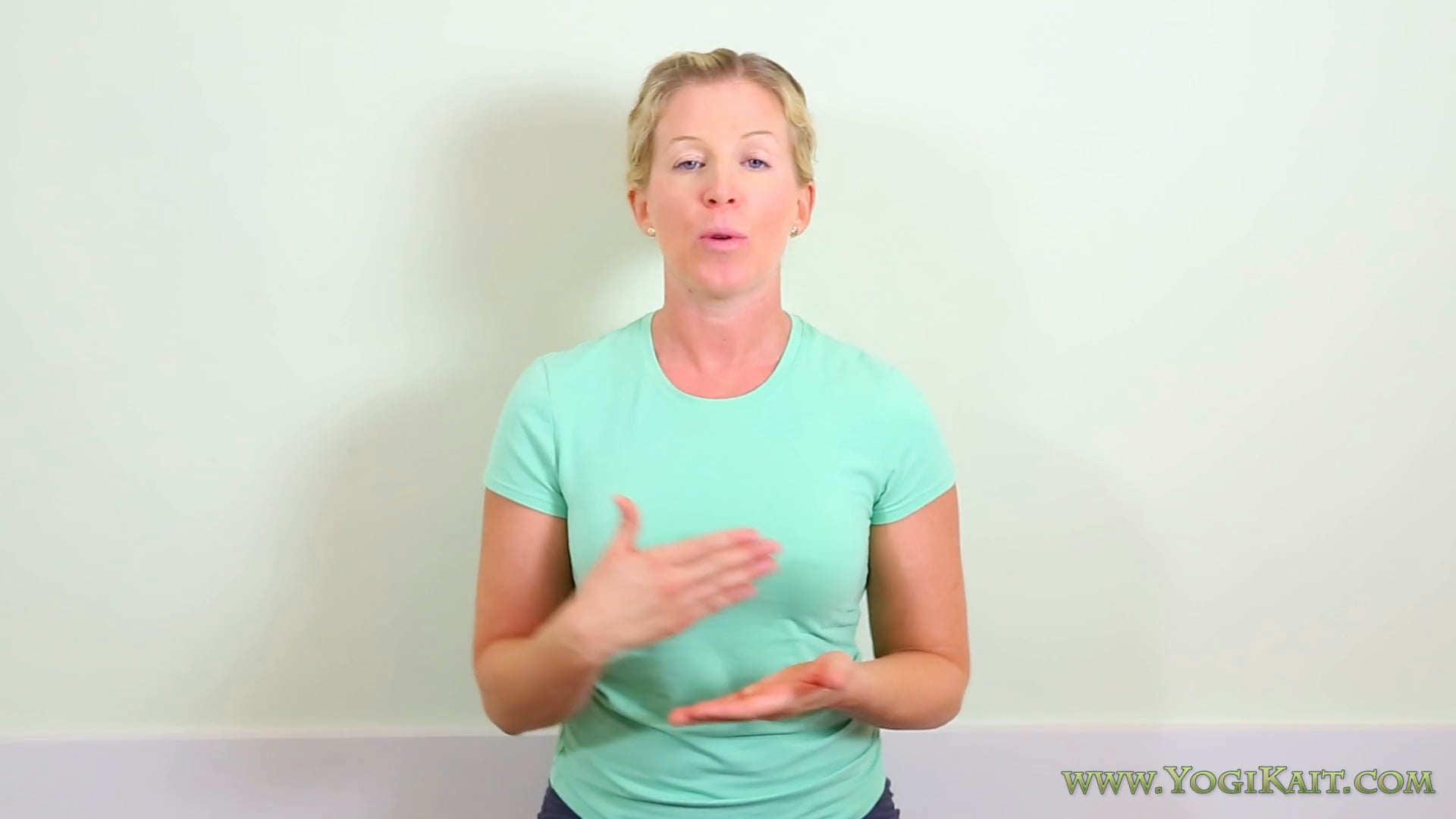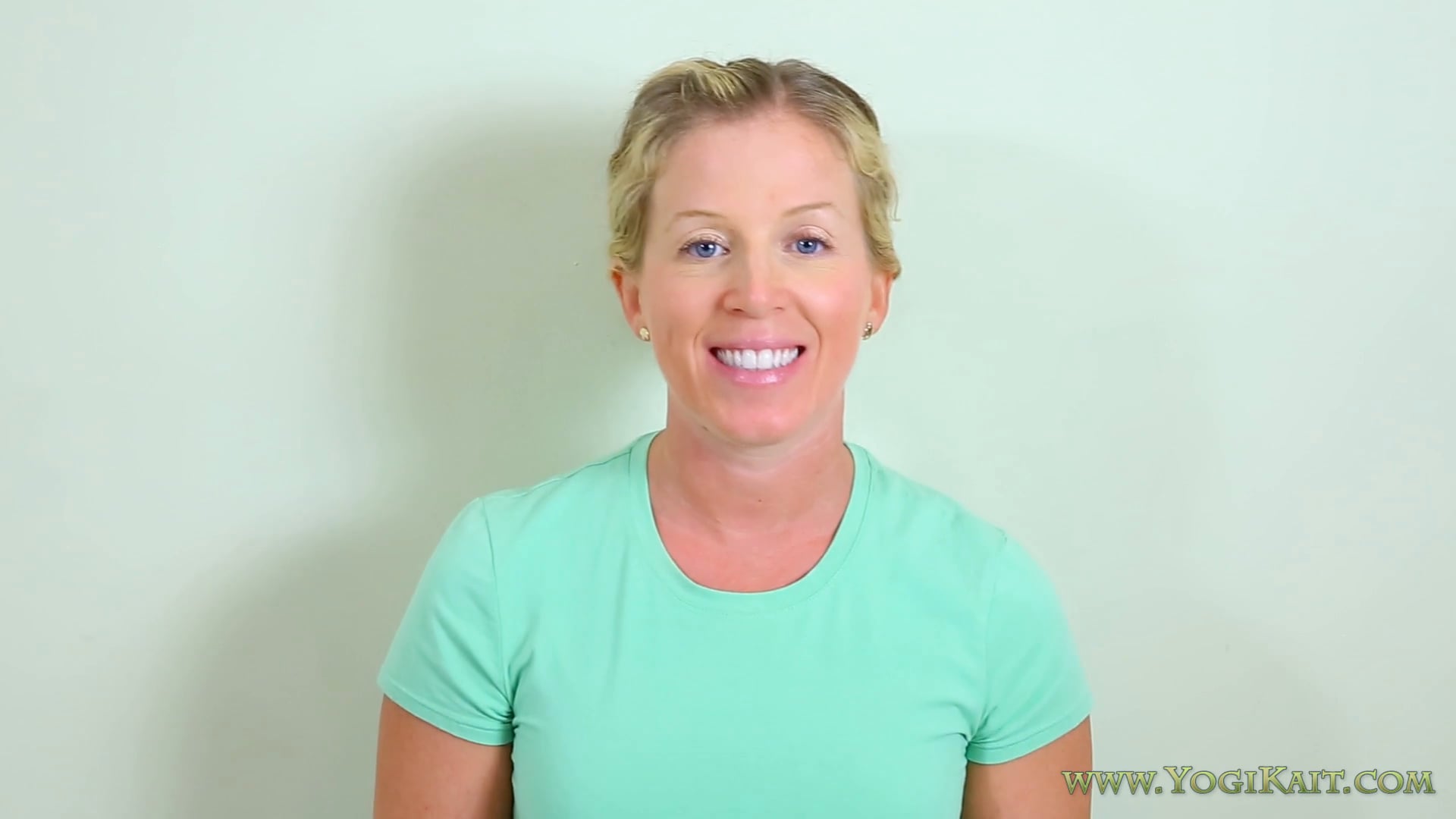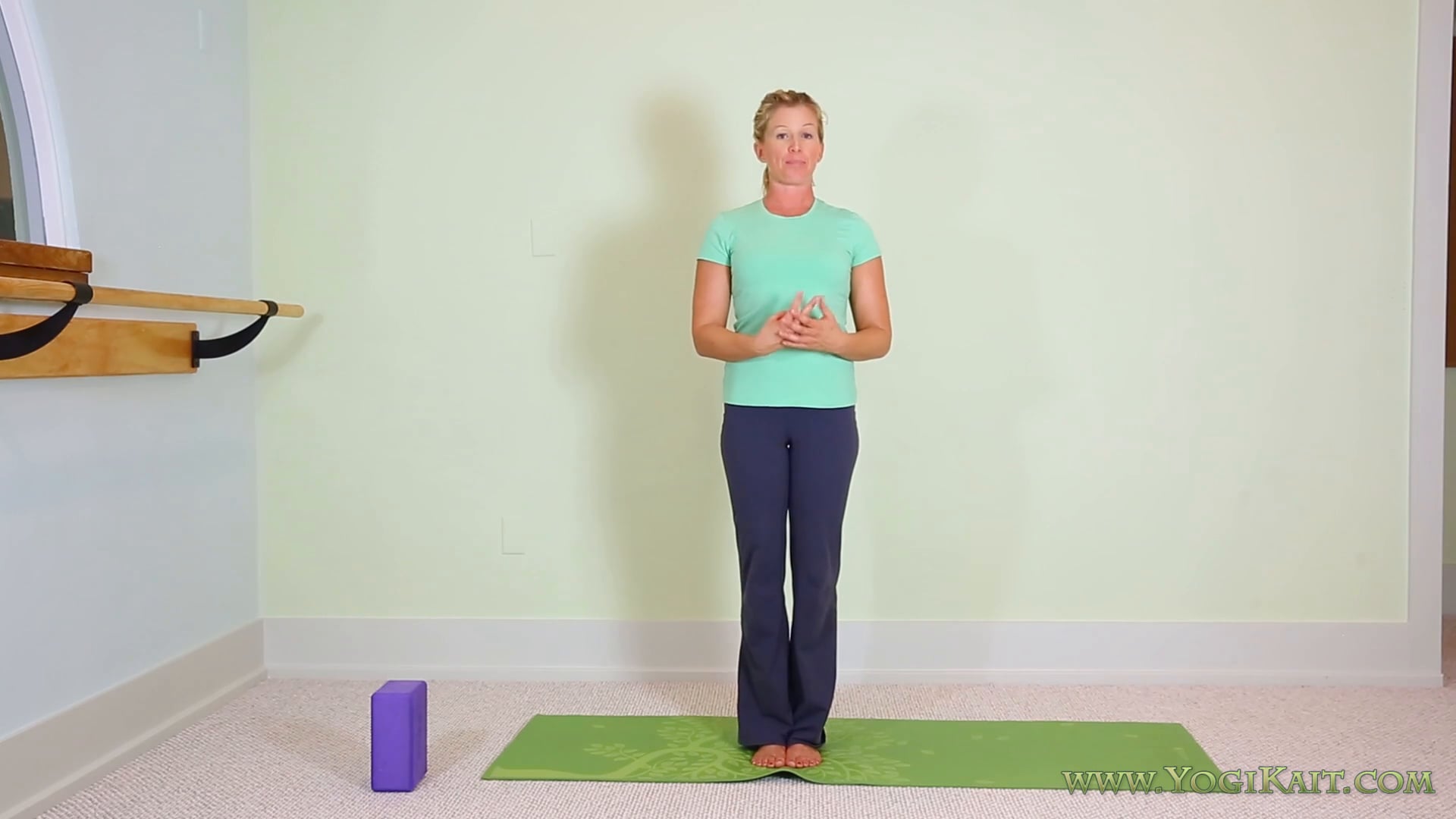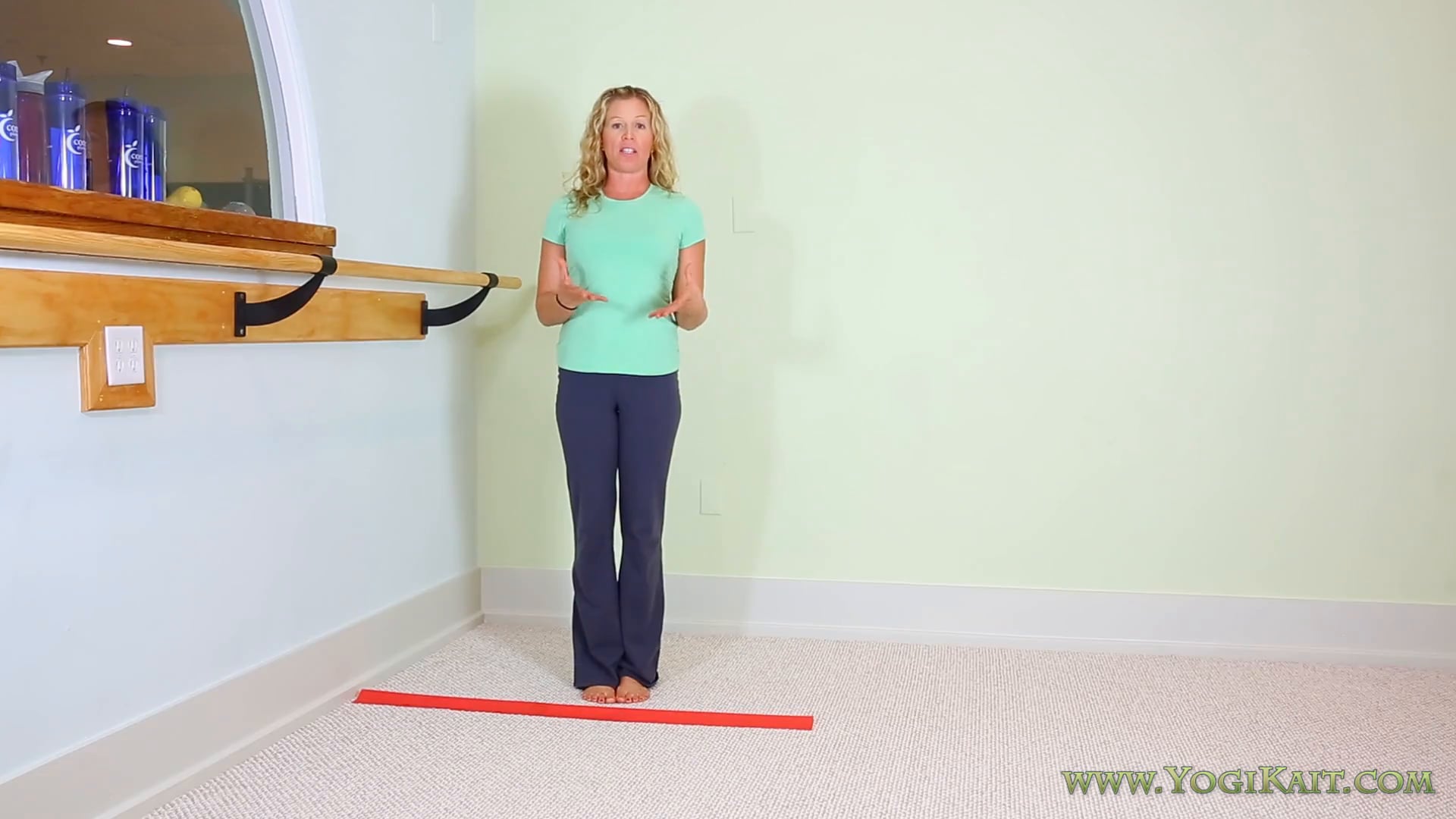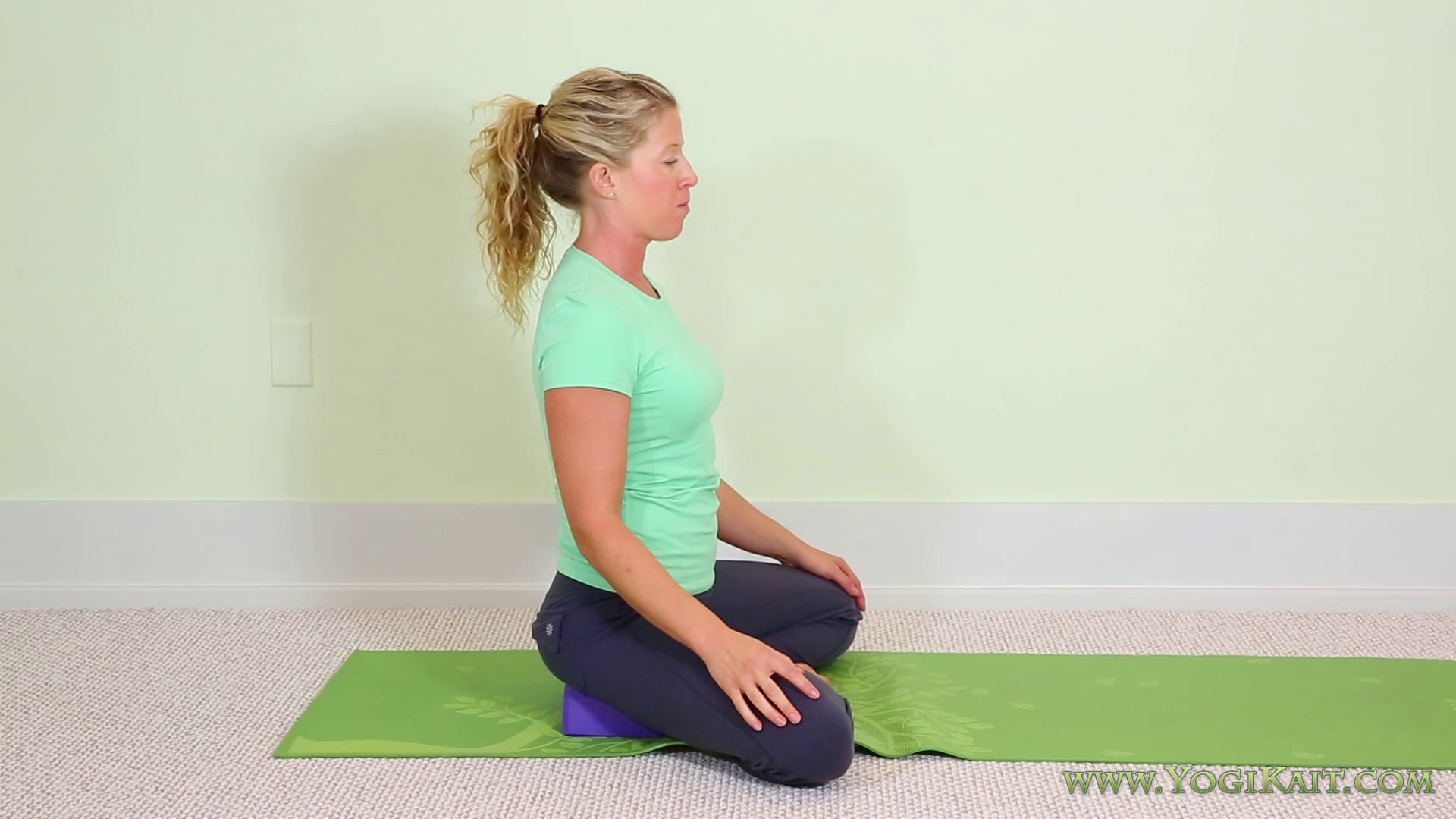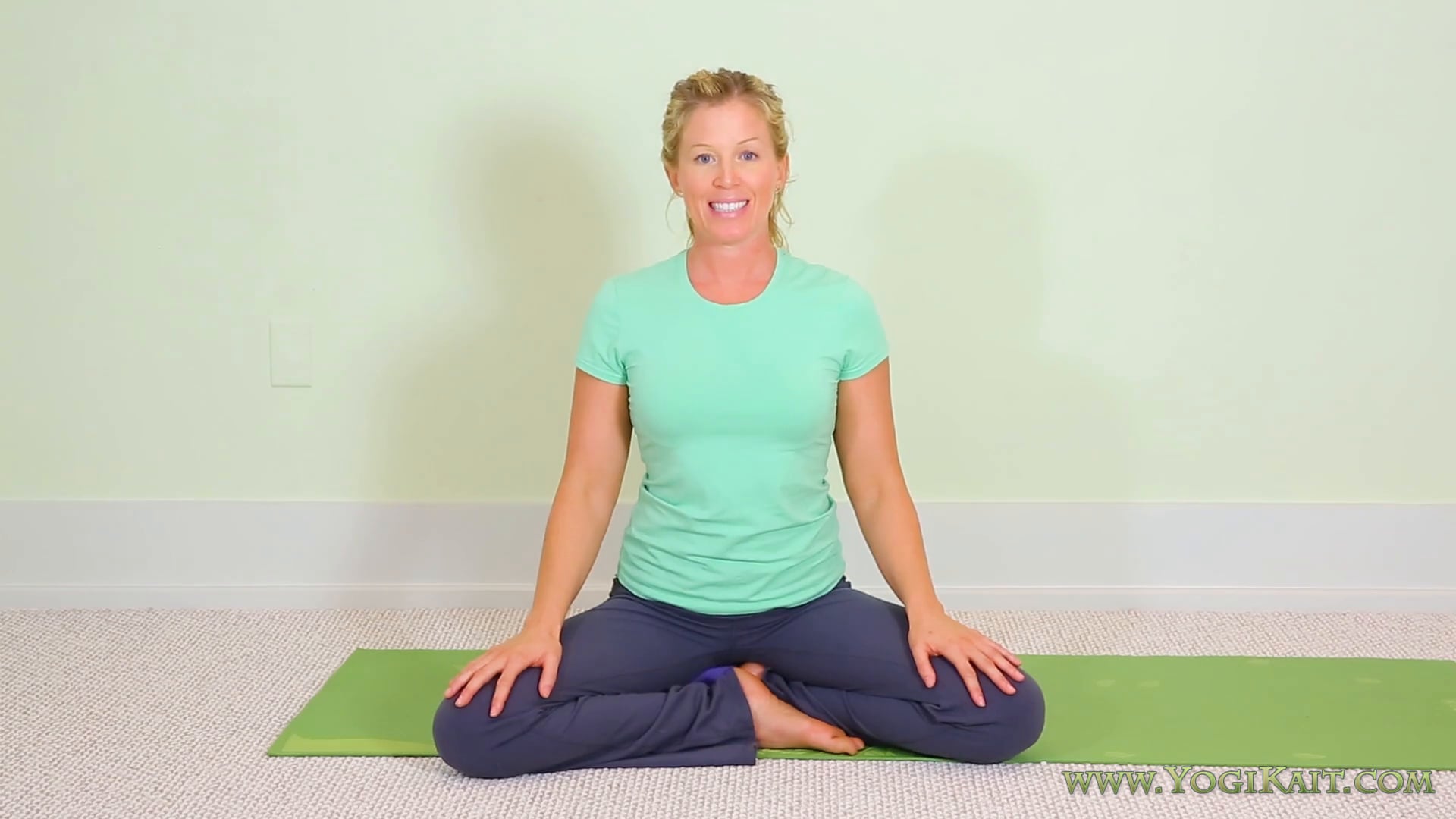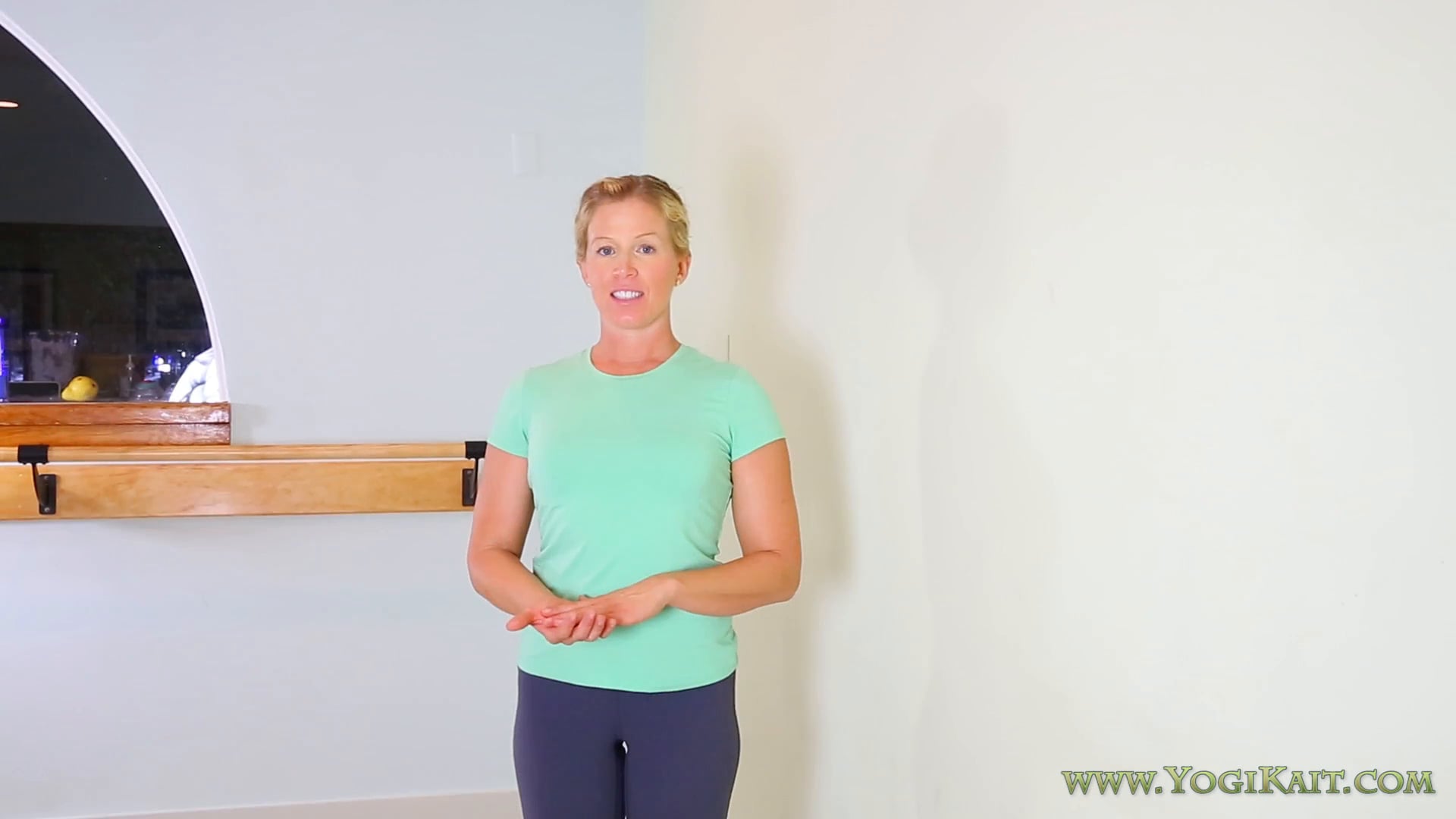Body LOVE Videos
Real Love for each Part of your Body
Shoulder Elbow Hand LOVE ( 7 Videos)
Shoulder Elbow Hand Love
This “Angel Wing Stretch” video demonstrates how to elongate and open under the arm where the tricep and lat muscles overlap. As we age, it gets harder to raise a straight arm overhead, but shoulder flexibility will improve quickly with practice. This stretch improves overall posture as well as the range of motion needed for other poses and techniques.
This “Shoulder Love” video teaches a simple and effective way to give your shoulders (aka rotator cuffs) a “tune up.” The weight used in this exercise strengthens the four muscles that make up each rotator cuff, and gently breaks up scar tissue.
This Upper Back Stretch video demonstrates a yoga pose to ease stiffness between the shoulder blades (aka scapula) caused by bearing the weight of the arms. The relationship between the chest wall (aka thoracic wall) and the upper back (aka thoracic spine) is explored as well, as you learn to soften and release tension.
This “Skull Shining” video demonstrates a type of Pranayama (aka breathing exercise) that helps rid the body of various ailments over time. Eventually, Kapalabhati should bring about a glow to the face of the practitioner. “Kapal” (forehead) + “bhati” (shining) = Kapalabhati (Skull Shining).
This “Chest Opening” video teaches how to create strength around each shoulder blade (aka scapula), and expansion along the front of the chest (aka pectoral area). Be careful not to force a deeper stretch, but rather use your breath to gradually surrender more fully.
This Side Body Opening video demonstrates effective techniques to release the fascia (aka connective tissue) along the side (lateral) body. The Five Stops in order are: underarm, rib cage, waist line, hip, and IT (aka iliotibial) band.
This “Iron Palm” video demonstrates techniques adapted from Kung Fu that can prevent, and perhaps reverse, arthritis. These exercises should be approached slowly and gently to allow the cartilage to gradually soften and rebuild. Over time, the hands will reclaim strength and flexibility.
Hip Knee Foot LOVE (15 Videos)
Hip Knee Foot Love
This Thigh Muscle Stretch video demonstrates how to release the four long muscles on the front of the thigh (aka the quadriceps). When quads and hip flexors are tight they pull on the front side of the pelvis, effecting posture and contributing to back, hip, and knee injuries. It is important to hold this stretch for a good length of time while you breath slowly and deeply.
This Thigh Muscle Stretch video demonstrates how to release the four long muscles on the front of the thigh (aka the quadriceps). When quads and hip flexors are tight they pull on the front side of the pelvis, effecting posture and contributing to back, hip, and knee injuries. It is important to hold this stretch for a good length of time while you breath slowly and deeply.
This Table Top Hip Stretch video demonstrates a variety of techniques to unlock deeply into the hips. The Split Level (or other supportive apparatus) fosters a deeper, more relaxed stretch, rather than having both feet on the same level. This stretch is particularly effective when your muscles are warm (e.g. after a power walk or bike ride). Be patient. Hips do not open up quickly.
This Plantar Fascia Release video demonstrates various techniques using a wooden dowel to stretch and strengthen the many joints in each foot. Gravity, exercise, and running can cause feet to become rigid which decreases the spring-like mechanism of the foot. By improving the overall alignment and flexibility of these bones, one truly improves the “pep” in one’s “step.” There are twenty-six bones in each foot: Happy Feet = Happy Body.
Go to Blog
This Knee and Ankle Mobility video demonstrates a stretch to achieve increased flexibility and range of motion. But be patient: the opening will be gradual. Over time, this posture will break up scar tissue (aka adhesions) that causes limited motion of the joint. Breathe into the change; the poison (discomfort) is the cure.
Knee and Ankle Mobility “Sitting on Heels” (Virasana)
This Baddha Konasana video teaches a seated yoga posture paired with deep breathing that gently opens your hips. In addition, the inner thigh muscles stretch which releases pressure in the pelvis. Practice this technique often for a gradual but continuous opening.
This “Quad & Reach” video will help to elongate the large muscle group on the front of the thighs (aka the quadriceps). Opening up the quads can help alleviate some knee pain and release tension in the low back. Everything in our bodies is connected, and the quads can play a significant role in the overall alignment of our bodies.
This Hip and Pelvic Stability video teaches how to isolate the movement of the femur in the hip socket (aka acetabulum), and the movement between the spine and the pelvis. The use of slow deep breaths and pelvic floor contractions increase mobility and stability in the hips and pelvic floor. This is not a strenuous action; it is designed to create awareness of these individual movements.
This “Knee Love” video teaches how to locate and gently manipulate the knee cap (aka the patella). The knee cap can get stuck due to overuse and misalignment which can create pain and rigidity. Massaging the surrounding tissue increases circulation, as well as the viscosity of the synovial fluid. This oil-like fluid will thicken, over time and with practice, which allows for better lubrication of the joint.
This Hip Opener video demonstrates various ways to elongate your piriformis. This muscle and the sciatic nerve are closely related, as they share a tunnel through the pelvis called the sciatic arch. This area can become congested, especially with the amount of sitting most of us do each day. Regular practice of this posture can help to keep things fluid, flexible, and pain-free.
This “Lower Body Love” video demonstrates how to increase circulation to the quads, hamstrings, and groin which is important as the legs are farthest away from the heart. This technique uses the foam roller to release stale blood from leg muscles, speed muscular recovery, and flush the capillaries in the lower body.
This “Feet Need Love” video demonstrates basic techniques to stretch and strengthen the feet using weight bearing movements. There are twenty-six bones in each foot, and with practice flexibility can be increased. Happy Feet + Pep In Your Step = Foot Locomotion
This “Hip Love” video demonstrates two different ways to address the relationship between the legs and the body which opens the hip-to-spine connection. The psoas muscle connects the leg (the lesser trochanter) to the lumbar spine, as well as to the thoracic spine (at T-12). In layman’s terms, the psoas is the “tenderloin” of the human body, and is the only muscle that connects the spine and rib cage to the leg. Creating greater flexibility in this area will improve posture.
This Deep Squat video demonstrates the benefits of keeping the lower body open and flexible. Over time, knees, hips, lower back, and digestion are more fluid. Malasana or “Garland Pose” can give the body’s joints from the waist down more length and better blood flow. With regular practice, this posture can also improve the ability to get up and down from the ground level.
This ”Tracking Boney Landmarks” video demonstrates precise alignment for feet, knees, ankles, and hips. For this particular technique, set up feet so the outside edges are parallel; they may feel a bit pigeon-toed. Foster correct leg alignment with regular practice.
Spine Posture Core LOVE ( 13 Videos)
Spine Posture Core Love
This Upper Back Mobilization video shows a simple technique to improve upper back (aka thoracic spine) rotation. As we age, this segment of the spine hardens into a more rounded shape (aka “Hunchback”), causing our heads to hang out in front of the ribcage. This forward head posture can lead to spinal disorders. A supple thoracic spine allows the head to stack above the ribcage (aka thorax), so the spine is properly aligned.
This Spinal Articulation video describes how isolated individual movement of each pair of vertebrae has a magical effect on the whole body. This includes emotional health, as the seven Chakras (aka emotional centers) are located along the spinal cord. Focus on the breath while experimenting with these techniques.
This Side Body Stretch video instructs how to lengthen and increase flexibility along both sides of the spine. Lateral Flexion is an underused range of motion in most spines, and is a crucial component of spinal health and agility. Daily practice creates greater mobility through both sides of the body.
This Hip and Pelvic Stability video teaches how to isolate the movement of the femur in the hip socket (aka acetabulum), and the movement between the spine and the pelvis. The use of slow deep breaths and pelvic floor contractions increase mobility and stability in the hips and pelvic floor. This is not a strenuous action; it is designed to create awareness of these individual movements.
This Spinal Release video demonstrates a restorative posture that allows the spine to rotate. Try to rotate as far as possible so that the pelvis and head are pointed in different directions. Breathe deeply while twisting to strengthen deep core muscles and relax overused back muscles. If one side is less flexible, stay longer on that side to promote greater mobility over time.
This “Floor Twist” video demonstrates a simple technique to rotate the spine. Don’t force a deepening of this pose; focus on your breath and gently increase your twist on the exhale. Experiment with contracting and releasing your pelvic floor muscles (Mula Bandha), and drawing in and releasing your navel (Uddiyana Bandha).
This “Neck Love” video demonstrates the use of isometric contractions to activate and strengthen rotational neck muscles. To relax your jaw and improve cervical rotation, open your mouth slightly as you press each temple into the mat. Remember to use only a 50% percent effort while pressing in this exercise.
This “Middle Spine Love” video demonstrates how to use the foam roller to loosen up the middle back. These techniques focus on the thoracic spine, and help to reclaim the spine’s best posture by allowing for optimal alignment.
This “Spinal Love Top to Bottom” video demonstrates how to slide the foam roller up or down so it is positioned at the base of the skull (top of the spine), or at the beginning of the sacrum (bottom of the spine). This technique mobilizes the spine using negative space and gravity which effectively relieves and prevents back pain. Be sure to allow the head or hips to hang off the end of the roller, and be creative.
This Side Body Opening video demonstrates effective techniques to release the fascia (aka connective tissue) along the side (lateral) body. The Five Stops in order are: underarm, rib cage, waist line, hip, and IT (aka iliotibial) band.
This “Hip Love” video demonstrates two different ways to address the relationship between the legs and the body which opens the hip-to-spine connection. The psoas muscle connects the leg (the lesser trochanter) to the lumbar spine, as well as to the thoracic spine (at T-12). In layman’s terms, the psoas is the “tenderloin” of the human body, and is the only muscle that connects the spine and rib cage to the leg. Creating greater flexibility in this area will improve posture.
This “Chakras Demystified” video briefly describes the seven major emotional centers called Chakras (the Sanskrit word for “wheel”). Certain yoga postures have specific effects on certain Chakras, and can be used to foster balance and wholeness. Improving the overall alignment of these wheels will enhance the relationship between your emotional and physical bodies.
Awakening the Inner Wisdom of LOVE ( 2 Videos)
Awakening the Inner Wisdom of LOVE
This video is a tutorial on how to use www.yogikait.com. Determine which body part needs extra “LOVE,” and preview the related video(s) from beginning to end. Once you know what you need, you can set up and participate while re-watching the video(s). All props shown are available for purchase on www.yogikait.com.
This Wrinkle Release video demonstrates how to smile from the inside to systematically relax and release the stress patterns that we hold in our faces. Please visit www.yogikait.com for a fuller description of these techniques.
SPIRIT Attitude Breath LOVE ( 10 Videos)
SPIRIT Attitude Breath LOVE
SPIRIT Attitude Breath LOVE
Go to Video
This Sun Salutation video demonstrates a traditional sequence of twelve poses choreographed with breath. This sequence: 1) systematically stretches the front and back sides of the body while building heat; 2) links movement and breath which is fundamental to any yoga practice. Feel free to modify this routine while building your strength.
This “Optimal Blueprint” video teaches how to understand what your body needs, and to create a precise yet simple routine that improves overall attitude, posture, strength, health, and flexibility. For maximum benefit, focus on improving what is difficult rather than mastering what is easy.
This Morning Ritual video is designed to inspire the creation of a daily practice. Five minutes is all you need to begin; remember, a short yoga practice is better than no practice. Select a variety of videos from this site to design your own personalized routine. Use what works well for your body, and make it fun.
This “Bandhas Demystified” video explains the various ‘locks’ in the human body that can be held and released, and how and why they are helpful. The three most commonly taught Bandhas are: Mula Bandha (Root Lock), Uddiyana Bandha (Flying Up or Belly Lock),and Jalanhandra Bandha (Cloud Catching or Throat Lock). These locks can hold and move Prana (aka Vital Energy) around the body, and can create greater strength and stability in yoga postures.
This video is a tutorial on how to use www.yogikait.com. Determine which body part needs extra “LOVE,” and preview the related video(s) from beginning to end. Once you know what you need, you can set up and participate while re-watching the video(s). All props shown are available for purchase on www.yogikait.com.
This “Skull Shining” video demonstrates a type of Pranayama (aka breathing exercise) that helps rid the body of various ailments over time. Eventually, Kapalabhati should bring about a glow to the face of the practitioner. “Kapal” (forehead) + “bhati” (shining) = Kapalabhati (Skull Shining).
This Wrinkle Release video demonstrates how to smile from the inside to systematically relax and release the stress patterns that we hold in our faces. Please visit www.findingthebotoxwithin.com for a fuller description of these techniques.
This “One Minute Breath” video demonstrates how to lengthen your breath cycle over time, and release stress. This technique begins with a conscious pausing at the top and bottom of each breath. Eventually, each breath cycle will be expanded to: 15 second inhale +15 second hold +15 second exhale +15 second hold = 1 minute breath. Be patient. Observe your lung capacity expand. Enjoy feeling wonderful.
This “Chakras Demystified” video briefly describes the seven major emotional centers called Chakras (the Sanskrit word for “wheel”). Certain yoga postures have specific effects on certain Chakras, and can be used to foster balance and wholeness. Improving the overall alignment of these wheels will enhance the relationship between your emotional and physical bodies.
Foot LOVE ( 4 Videos)
Foot LOVE
This Plantar Fascia Release video demonstrates various techniques using a wooden dowel to stretch and strengthen the many joints in each foot. Gravity, exercise, and running can cause feet to become rigid which decreases the spring-like mechanism of the foot. By improving the overall alignment and flexibility of these bones, one truly improves the “pep” in one’s “step.” There are twenty-six bones in each foot: Happy Feet = Happy Body.
This “Feet Need Love” video demonstrates basic techniques to stretch and strengthen the feet using weight bearing movements. There are twenty-six bones in each foot, and with practice flexibility can be increased. Happy Feet + Pep In Your Step = Foot Locomotion
This “Iron Palm” video demonstrates techniques adapted from Kung Fu that can prevent, and perhaps reverse, arthritis. These exercises should be approached slowly and gently to allow the cartilage to gradually soften and rebuild. Over time, the hands will reclaim strength and flexibility.
This ”Tracking Boney Landmarks” video demonstrates precise alignment for feet, knees, ankles, and hips. For this particular technique, set up feet so the outside edges are parallel; they may feel a bit pigeon-toed. Foster correct leg alignment with regular practice.
Ankle LOVE ( 1 Video)
Ankle LOVE
This “Knee Love” video teaches how to locate and gently manipulate the knee cap (aka the patella). The knee cap can get stuck due to overuse and misalignment which can create pain and rigidity. Massaging the surrounding tissue increases circulation, as well as the viscosity of the synovial fluid. This oil-like fluid will thicken, over time and with practice, which allows for better lubrication of the joint.
Hand LOVE ( 1 Video)
Hand Love
This “Iron Palm” video demonstrates techniques adapted from Kung Fu that can prevent, and perhaps reverse, arthritis. These exercises should be approached slowly and gently to allow the cartilage to gradually soften and rebuild. Over time, the hands will reclaim strength and flexibility.
Hip LOVE ( 3 Videos)
Hip LOVE
This Table Top Hip Stretch video demonstrates a variety of techniques to unlock deeply into the hips. The Split Level (or other supportive apparatus) fosters a deeper, more relaxed stretch, rather than having both feet on the same level. This stretch is particularly effective when your muscles are warm (e.g. after a power walk or bike ride). Be patient. Hips do not open up quickly.
This Hip and Pelvic Stability video teaches how to isolate the movement of the femur in the hip socket (aka acetabulum), and the movement between the spine and the pelvis. The use of slow deep breaths and pelvic floor contractions increase mobility and stability in the hips and pelvic floor. This is not a strenuous action; it is designed to create awareness of these individual movements.
This “Hip Love” video demonstrates two different ways to address the relationship between the legs and the body which opens the hip-to-spine connection. The psoas muscle connects the leg (the lesser trochanter) to the lumbar spine, as well as to the thoracic spine (at T-12). In layman’s terms, the psoas is the “tenderloin” of the human body, and is the only muscle that connects the spine and rib cage to the leg. Creating greater flexibility in this area will improve posture.
Neck LOVE ( 4 Videos)
Neck LOVE
This Upper Back Mobilization video shows a simple technique to improve upper back (aka thoracic spine) rotation. As we age, this segment of the spine hardens into a more rounded shape (aka “Hunchback”), causing our heads to hang out in front of the ribcage. This forward head posture can lead to spinal disorders. A supple thoracic spine allows the head to stack above the ribcage (aka thorax), so the spine is properly aligned.
This Spinal Articulation video describes how isolated individual movement of each pair of vertebrae has a magical effect on the whole body. This includes emotional health, as the seven Chakras (aka emotional centers) are located along the spinal cord. Focus on the breath while experimenting with these techniques.
This “Middle Spine Love” video demonstrates how to use the foam roller to loosen up the middle back. These techniques focus on the thoracic spine, and help to reclaim the spine’s best posture by allowing for optimal alignment.
This “Spinal Love Top to Bottom” video demonstrates how to slide the foam roller up or down so it is positioned at the base of the skull (top of the spine), or at the beginning of the sacrum (bottom of the spine). This technique mobilizes the spine using negative space and gravity which effectively relieves and prevents back pain. Be sure to allow the head or hips to hang off the end of the roller, and be creative.
Chakras ( 1 Video)
Chakras
This “Chakras Demystified” video briefly describes the seven major emotional centers called Chakras (the Sanskrit word for “wheel”). Certain yoga postures have specific effects on certain Chakras, and can be used to foster balance and wholeness. Improving the overall alignment of these wheels will enhance the relationship between your emotional and physical bodies.
Breath LOVE ( 4 Videos)
Breath LOVE
This Sun Salutation video demonstrates a traditional sequence of twelve poses choreographed with breath. This sequence: 1) systematically stretches the front and back sides of the body while building heat; 2) links movement and breath which is fundamental to any yoga practice. Feel free to modify this routine while building your strength.
This video is a tutorial on how to use www.yogikait.com. Determine which body part needs extra “LOVE,” and preview the related video(s) from beginning to end. Once you know what you need, you can set up and participate while re-watching the video(s). All props shown are available for purchase on www.yogikait.com.
This “Skull Shining” video demonstrates a type of Pranayama (aka breathing exercise) that helps rid the body of various ailments over time. Eventually, Kapalabhati should bring about a glow to the face of the practitioner. “Kapal” (forehead) + “bhati” (shining) = Kapalabhati (Skull Shining).
This “One Minute Breath” video demonstrates how to lengthen your breath cycle over time, and release stress. This technique begins with a conscious pausing at the top and bottom of each breath. Eventually, each breath cycle will be expanded to: 15 second inhale +15 second hold +15 second exhale +15 second hold = 1 minute breath. Be patient. Observe your lung capacity expand. Enjoy feeling wonderful.
Knee LOVE ( 4 Videos)
Knee LOVE
This Knee and Ankle Mobility video demonstrates a stretch to achieve increased flexibility and range of motion. But be patient: the opening will be gradual. Over time, this posture will break up scar tissue (aka adhesions) that causes limited motion of the joint. Breathe into the change; the poison (discomfort) is the cure.
This Baddha Konasana video teaches a seated yoga posture paired with deep breathing that gently opens your hips. In addition, the inner thigh muscles stretch which releases pressure in the pelvis. Practice this technique often for a gradual but continuous opening.
This “Quad & Reach” video will help to elongate the large muscle group on the front of the thighs (aka the quadriceps). Opening up the quads can help alleviate some knee pain and release tension in the low back. Everything in our bodies is connected, and the quads can play a significant role in the overall alignment of our bodies.
This “Knee Love” video teaches how to locate and gently manipulate the knee cap (aka the patella). The knee cap can get stuck due to overuse and misalignment which can create pain and rigidity. Massaging the surrounding tissue increases circulation, as well as the viscosity of the synovial fluid. This oil-like fluid will thicken, over time and with practice, which allows for better lubrication of the joint.
Shoulder LOVE ( 3 Videos)
Shoulder LOVE
This “Angel Wing Stretch” video demonstrates how to elongate and open under the arm where the tricep and lat muscles overlap. As we age, it gets harder to raise a straight arm overhead, but shoulder flexibility will improve quickly with practice. This stretch improves overall posture as well as the range of motion needed for other poses and techniques.
This Upper Back Mobilization video shows a simple technique to improve upper back (aka thoracic spine) rotation. As we age, this segment of the spine hardens into a more rounded shape (aka “Hunchback”), causing our heads to hang out in front of the ribcage. This forward head posture can lead to spinal disorders. A supple thoracic spine allows the head to stack above the ribcage (aka thorax), so the spine is properly aligned.
This “Chest Opening” video teaches how to create strength around each shoulder blade (aka scapula), and expansion along the front of the chest (aka pectoral area). Be careful not to force a deeper stretch, but rather use your breath to gradually surrender more fully.

